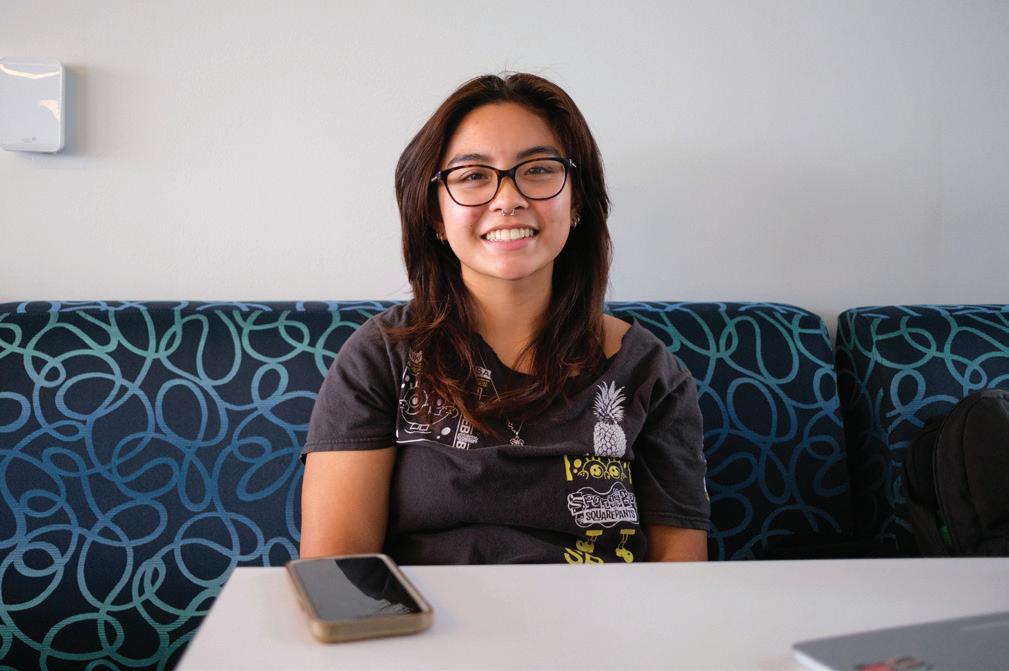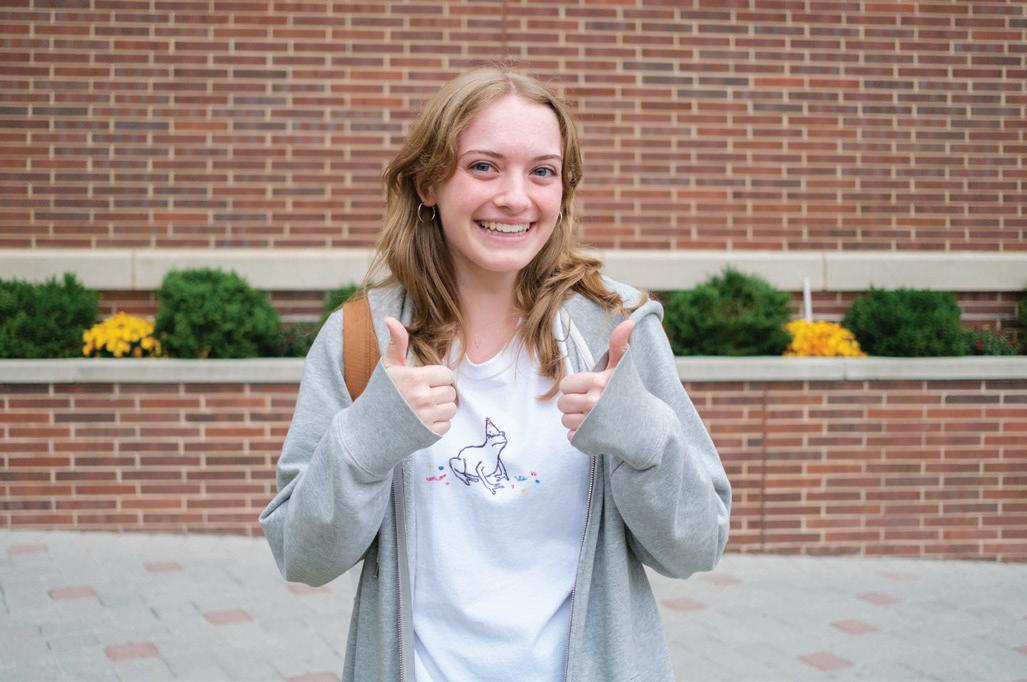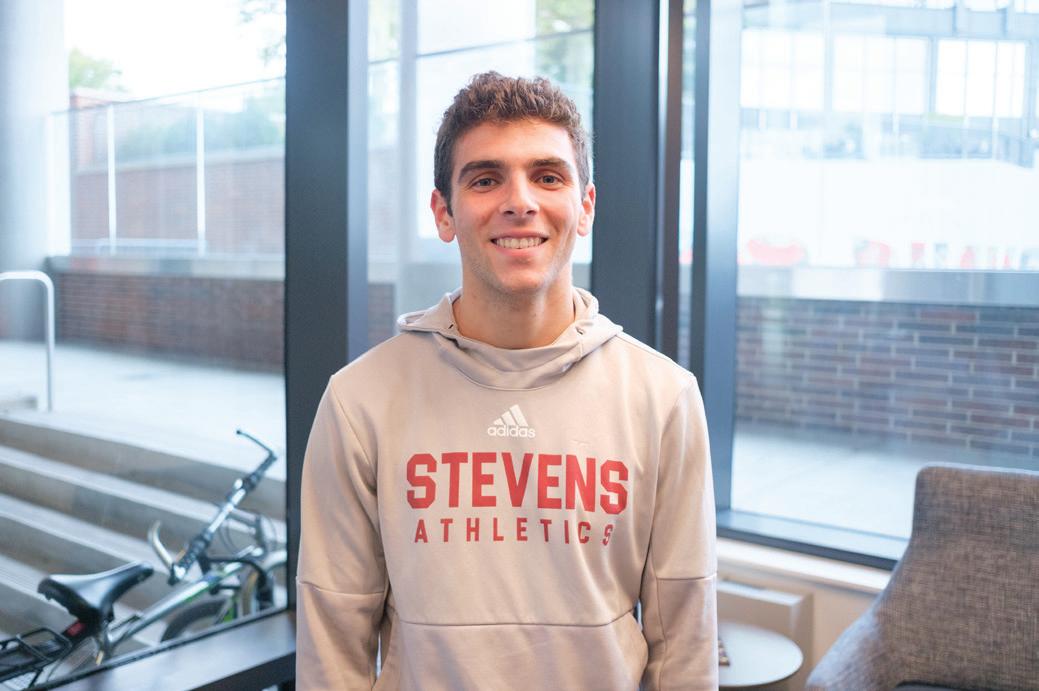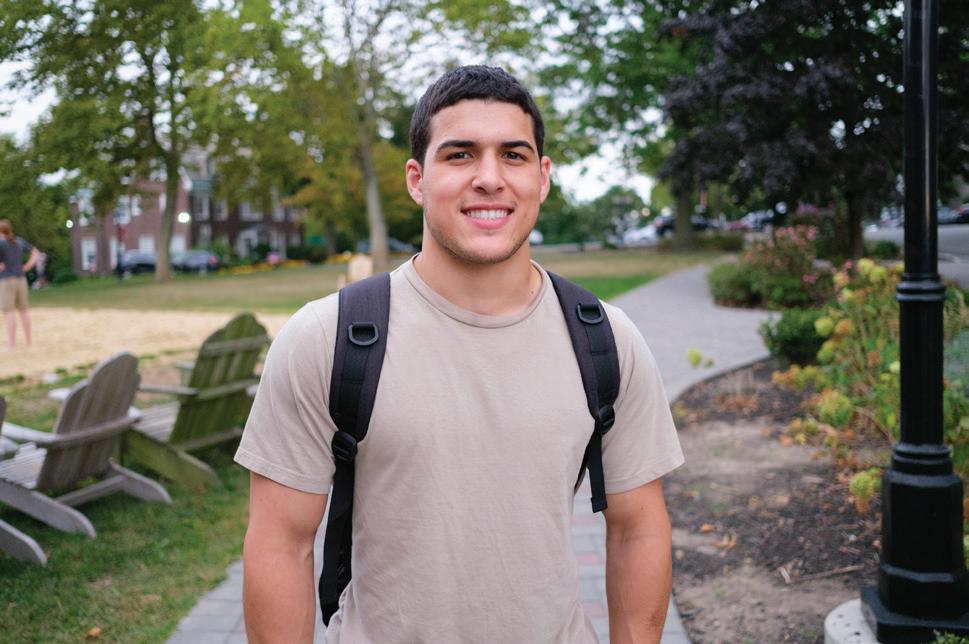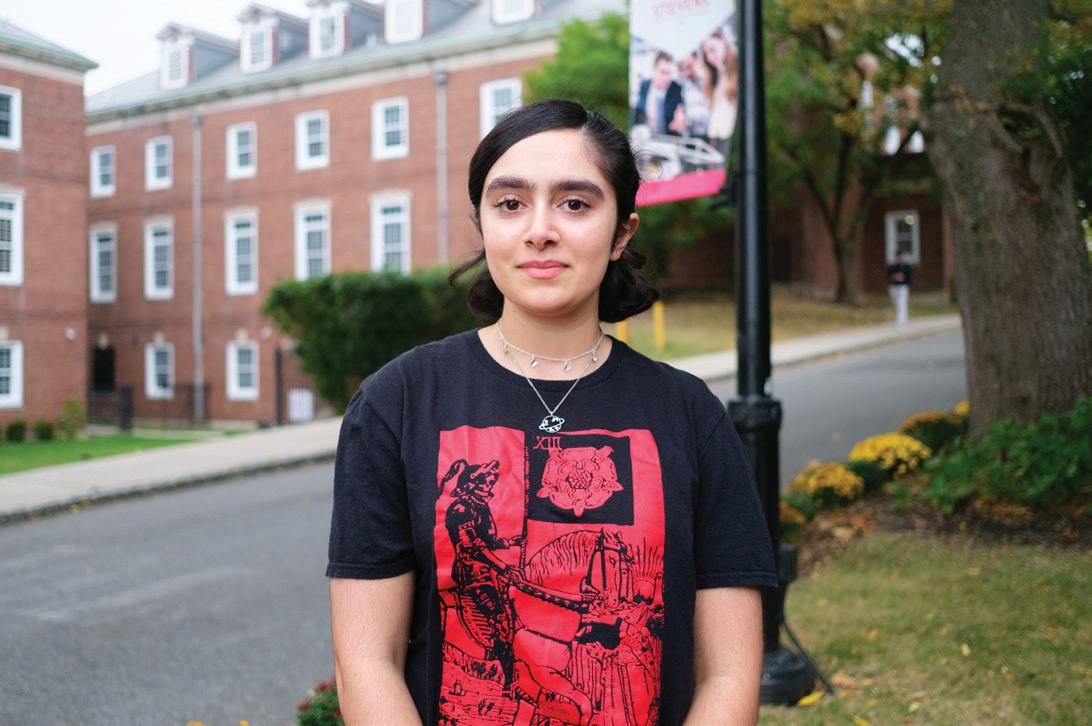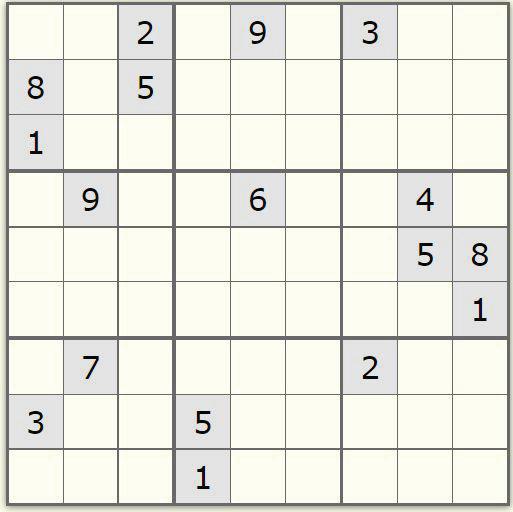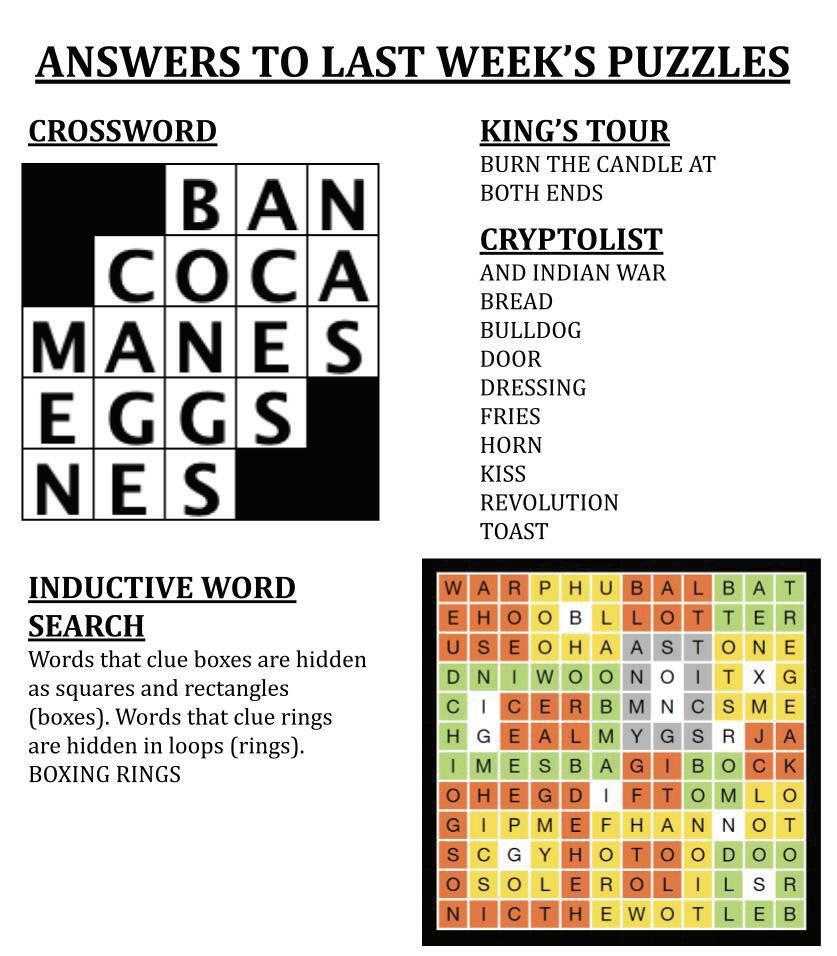Did you know YOU can register to vote in Hoboken? Read the register to vote feature to learn more!


Did you know YOU can register to vote in Hoboken? Read the register to vote feature to learn more!

BY BEN KNOBLOCH, NEWS WRITER
While the presidential election is foremost in many Americans’ minds, this November will also give voters the opportunity to participate in many down-ballot elections. It’s important to understand the significance of every race and the issues at stake before casting one’s ballot. Here are some of the elections most relevant to Stevens students and Hoboken residents, moving from the most local races to the national level.
Hudson County will be holding its election for county surrogate in the only county-level municipal election this year. County surrogate is an office that oversees the validation of wills, the appointment of will administrators, and administrative decisions related to guardianship. Incumbent Democrat Tilo Rivas will be challenged by Republican Juliana Lombard.
The congressional race for New Jersey’s 8th district, which includes Hoboken, will see Republican challenger Anthony Valdes face off against the heavily favored Rob Menendez Jr., the son of former U.S. Senator Bob Menendez. Menendez faced a competitive Democratic primary challenge from Hoboken Mayor Ravi Bhalla amid his father’s battle with corruption charges and multiple
indictments. Menendez Jr. ultimately won the nomination in June, weeks before his father was found guilty of corruption charges, including accepting bribes and working as a foreign agent, and resigned from the Senate.
The U.S. Senate race will thus feature two new faces. Andy Kim, Democratic congressman from New Jersey’s 3rd district, will be facing Curtis Bashaw, a hotel entrepreneur and preservationist who has been endorsed by former New Jersey Governor Chris Christie and defeated a Trump-endorsed rival. Although Democrats feared Bob Menendez’s corruption conviction would endanger the party’s hold on the seat, RealClearPolitics rates the race as “Likely Democratic.”
Lastly, of course, will be the race for president. Democratic nominee and incumbent U.S. Vice President Kamala Harris will be facing Republican nominee and former U.S. President Donald Trump. The vote will cap off a dramatic election year in which incumbent President Joe Biden withdrew as his party’s nominee after a disastrous debate showing against Trump.
A list of all races relevant to Hudson County Residents, from the top to the bottom of the ballot, can be found on the Hudson Coun-
SEE ELECT PAGE 2
BY JEREMIAH CHINWENDU, STAFF WRITER
Stevens has seen a drop in its national rank in free speech, according to the 2025 College Free Speech Report published by the Foundation for Individual Rights and Expression (FIRE) and College Pulse. The 2024 report saw Stevens ranked 116th of the 248 schools whose students participated in the survey, but in the 2025 report, Stevens ranks 135th overall out of the 254 schools surveyed.
Stevens maintains its ‘average’ rating in free speech for both years, but there are a number of factors influencing student life that are bound to prevent free speech at this school from being ranked higher in the future. The breakdown of the different categories in which Stevens ranked low show that students do not feel as though they are safe expressing their opinions, political or otherwise. Stevens ranked 206th in administrative support, which measures students’ perception of their school’s support for freedom of speech. Stevens also ranked 154th in openness, which is a student’s perceived ability to have conversations about difficult topics and express opin-
ions that could support or go against the norm. Being a mostly liberal institution that lacks both racial and gender diversity, students of certain backgrounds or beliefs are often afraid of expressing their ideas because of the way those ideas will affect their perception.
Stevens ranks 142nd in self-censorship, as 52% of students say they silence themselves at least once or twice a month. Ranking 139th in conservative speaker tolerance, students with conservative views often stay silent during classroom discussions about race-related topics or political views. One student of the class of 2024 spoke about a conversation in one of their classes involving gun control, in which the majority of the class advocated for stricter gun control laws. This student had the opinion that the Second Amendment should be supported, but silenced themselves out of fear of being seen as ignorant or heartless. Another student of the class of 2027 recalled a classroom conversation about racism wherein the professor and some students painted all conservatives as evil with no exceptions. The student, who was not a conservative, said he recognized that it was wrong
SEE SPEECH PAGE 3
SCIENCE (6) Newfound electric field? Pregnancy brain? Aswaganda? Caffeine? Read about what’s going on in the world of
(10)
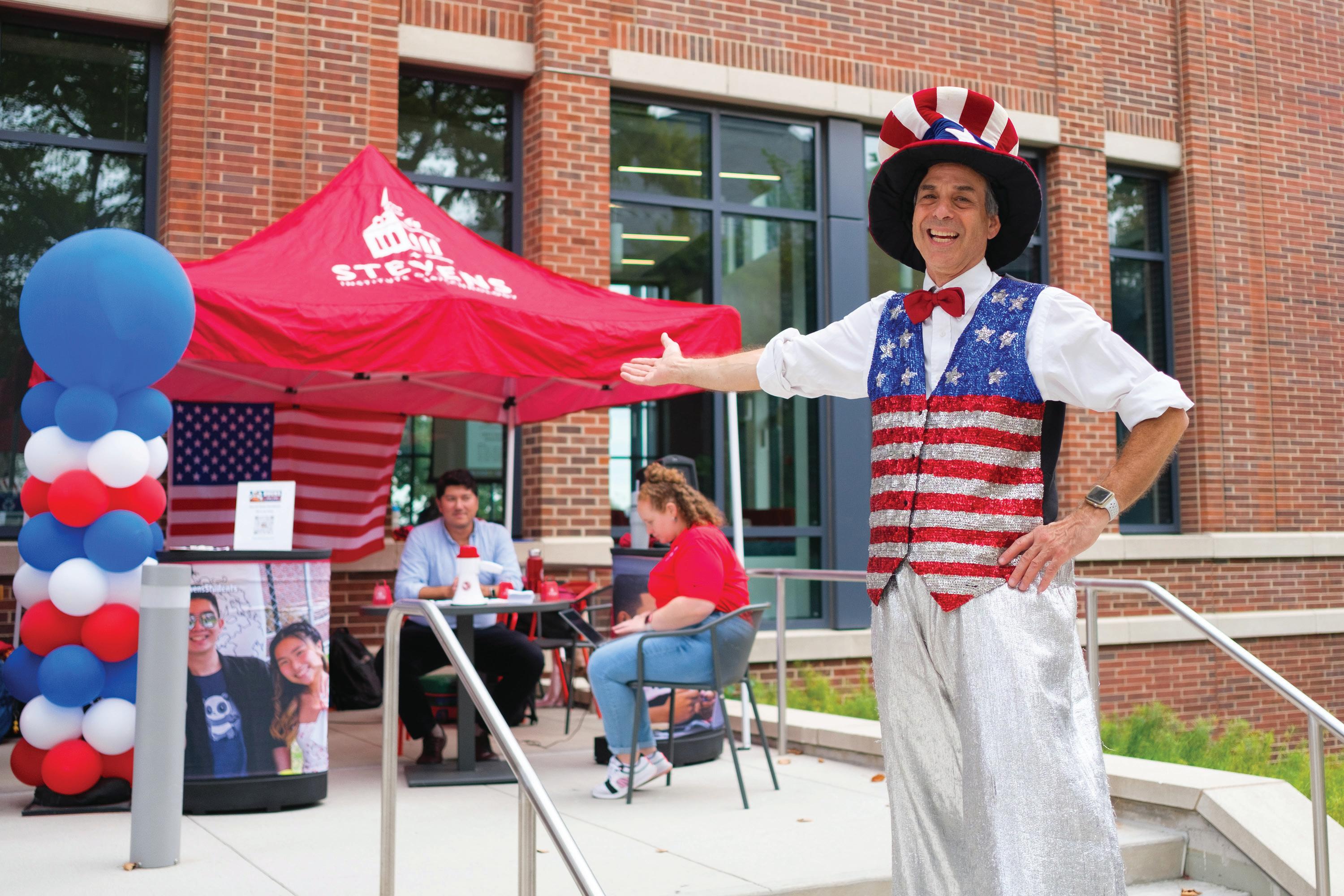
BY AMANI KARIM, CONTRIBUTOR
On September 17, Lindsey R. Swindall, Ph.D, delivered a lecture entitled “A Historical Overview of the Constitution” in the UCC Gallery. Her lecture discussed the historical context of the Constitution paired with the historical significance of prevalent sections. Since 2015, Professor Swindall has been a Teaching Associate Professor of Writing and Humanities in the School of Humanities, Arts and Social Sciences. She is an acclaimed scholar
in the field of African American studies with notable publications and awards. The event was sponsored by the Provost’s Office for Constitution Day. The Provost’s Office is responsible for all academic departments and was of immense help during this day’s event.
Small printed copies of the Constitution were distributed to the audience, serving as a symbolic gesture and promoter of reflection of the evolution of American rights. At the lecture, Professor Swindall highlighted key constitutional principles such as
President Farvardin ranks top ten in NJ educators list
BY EVAN PAPAGEORGE, HEAD COPY EDITOR
In an ever-evolving landscape where educational institutions strive for distinction, President Nariman Farvardin is a recognized visionary leader. For the sixth consecutive year, Farvardin has secured a spot on the prestigious NJBIZ Education Power 50 list, a recognition that highlights his influence on the institution’s growth and success. This accolade reflects his personal achievements and the extraordinary transformation Stevens has undergone under his leadership since 2011.
Under Farvardin’s guidance, Stevens has experienced a rise in national rankings and institutional prestige. Since his appointment, the university has celebrated a phenomenal 71% increase in overall enrollment, showcasing a growing recognition of Stevens’s value in today’s competitive educational environment. Graduate applications have skyrocketed by 382%, while undergraduate applications have surged by 294%, underscoring the interest in the innovative programs available.
A Stevens article announcing his ranking reports that one of the most exciting
success metrics is the rising academic caliber of enrolled students. The median SAT score for incoming undergraduates has soared by 156 points, reflecting Stevens’ unwavering commitment to attracting top-tier talent. Moreover, the graduation rate has leaped from 73% in 2010 to an impressive 90% in 2023 — an outstanding achievement compared to the national average, which hovers below 50%.
Financial stability is another hallmark of Stevens’ ascent. The university boasts a remarkably low student loan default rate of just 0.4%, a striking contrast to the national average exceeding 10%. This financial prudence and a Stevens degree’s strong return on investment have solidified the institution’s esteemed reputation. The Class of 2022 reported an impressive average starting salary of $84,700, with 97.3% securing positive outcomes within six months of graduation. Such outstanding figures have earned Stevens recognition as having one of the highest returns on investment in the nation, ranking 15th on Payscale’s College ROI Report.
Farvardin’s impact extends beyond academic metrics. Under his leadership, Stevens has made sig-
SEE RANK PAGE 3
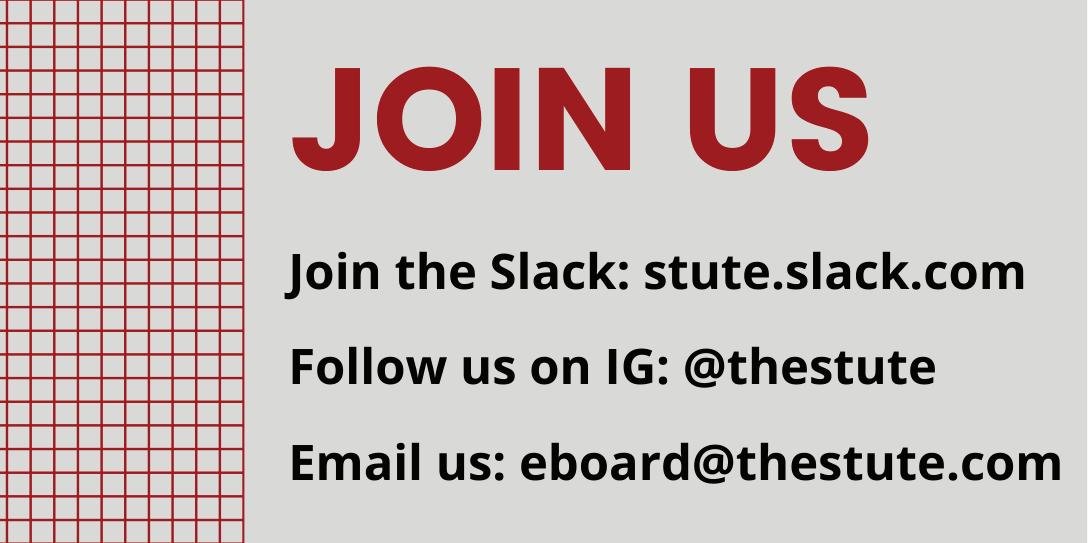
federalism and the system of checks and balances. She touched on the often-overlooked indigenous influence on the Constitution and U.S. political system, which, according to NativeAmericaToday, “was influenced by the political system developed by the Iroquois Confederacy, as were many of the democratic principles incorporated into the constitution itself” (NativeAmericaToday). Through discussion of the Revolutionary era, Professor Swindall was able to draw connections between this and the ideas which found currency at the
Constitutional Convention in Philadelphia in 1787. Following the lecture, on the UCC Patio Professor Swindall held a Constitution Day and Voter Registration Booth. If any students missed the opportunity to register to vote on campus, they are able to register online in New Jersey on the official site of the State of New Jersey.
The Stevens family and the Constitution John Stevens II and his son, Colonel John, were both supporters of the Patri-
SEE USA PAGE 2
BY JOSEPHINE CHOONG, CONTRIBUTOR
Throughout September, Mayor Eric Adams and his colleagues have faced several federal investigations and raids. While there isn’t an official reason for the investigations, some were suspects of corruption and bribery. New reports also say that the federal investigations into Mayor Adams involve links between his 2021 campaign and six foreign countries.
Investigations have been swirling around Mayor Adams and his staff since last year. Last November, the Federal Bureau of Investigation (FBI) seized Adams’ electronic devices, including an iPad and cell phone, as a part of an investigation into whether his campaign received illegal foreign donations from Turkey using a Brooklyn construction company as a conduit. The FBI also searched Brianna Suggs, a campaign consultant and top fundraiser for
SEE MAYOR PAGE 3
The Fed cut interest rates: what does this mean for you?
BY TANYA AVADIA, BUSINESS MANAGER
Understanding how monetary policy in the U.S. works helps to understand
SEE RATES PAGE 3
On September 18, the Federal Reserve made the announcement that many were waiting for: It is cutting interest rates. The rate cut of 50 basis points or 0.5% comes after a long wait and with a lot of shock. Back in 2023, the Fed had promised three interest rate cuts in 2024, and there was a lot of speculation on the market as to when these promised cuts would happen and if three rate cuts were even plausible. At the meeting of the Federal Open Markets Committee (FOMC) in September, they issued the first rate cut, lowering the federal fund rate to 4.75%-5.25%. This was a welcoming surprise to many, given the Fed’s cautious stance of keeping interest rates elevated to tamp down on high levels of inflation.

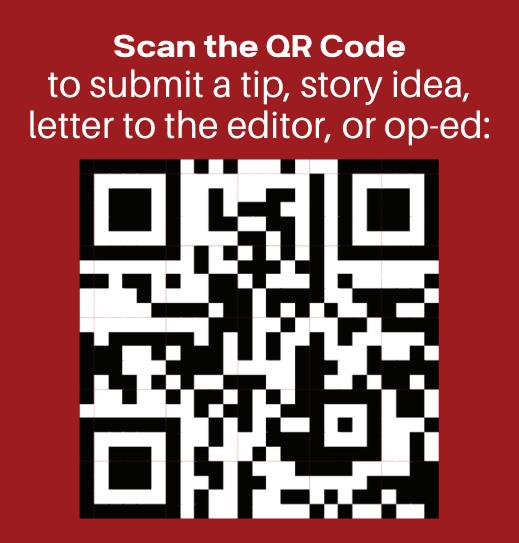
Masthead
Volume CXXI No. 4
Executive Board
EDITOR-IN-CHIEF......................................ISABELLA ZIV ‘25
BUSINESS MANAGER............................TANYA AVADIA ‘26
MANAGING EDITOR..............................ARTHUR SERRA ‘27
LAYOUT EDITOR................................JIYA JAISINGHANI ‘27
OUTREACH CHAIR.........................................AVA WANG ‘25
DIGITAL MANAGER...................................ABBY JACOBS ‘27
SECRETARY..........................................NICOLE GIARDINO ‘25
HEAD COPY EDITOR.....................EVAN PAPAGEORGE ‘26
ELECT CONTINUED FROM PAGE 1
ty Clerk’s website. There are a number of ways to vote in Hudson County. Election Day is November 5, and in-person
polling locations will be open from 6 a.m. to 8 p.m. Early voting will stretch from Saturday, October 26 through Sunday, November 3, during which voters can cast their ballots at early polling locations beginning at 10 a.m. until 6 p.m. on Sunday and 8 p.m. on all other days. Lastly, votes will be accepted by mail until Election Day and must be received by the Hudson County Board of Elections within six days of the election. The voter registration deadline is October 15. Residents can register online, by mail, or in person to be ready for Election Day on November 5.
The voter registration deadline is October 15. Residents can register online, by mail, or in person to be ready for Election Day on November 5.
tution.
NEWS EDITOR.........................................BEN KNOBLOCH ‘25
SCIENCE EDITOR..................................RIYANA PHADKE ‘27
OPINION EDITOR....................................TASHA KHOSLA ‘25
SPORTS EDITOR................................RUTHIE MULLISKY ‘26
FEATURES EDITOR...................................TIANNA SPITZ ‘27
PULSE EDITOR........................................MIA PETROLINO ‘25
Editorial Board Operations Board
HEAD PHOTOGRAPHER RAFAEL LEE LI ‘25
Layout Team
ASSIS. LAYOUT EDITOR............VICTORIA OKONKWO ‘28
DELIVERY BOY.........................................JONATHAN LAI ‘28
Staff & Contributors
Emily Martinez
Amani Karim
Jeremiah Chinwendu
Josephine Choong
Madison Heller
Charlie Beall
Erin McGee
Camryn Winant
Itai Geller
Prisha Vagvala
Christina Thomas Eiliyah Sarowar
Viktor Palmer
Josie Strano
Stephen Pachucki
Jack Scherban
GENERAL.........................................EBOARD@THESTUTE.COM
EDITOR-IN-CHIEF.........................EDITOR@THESTUTE.COM
ADVERTISING.............................BUSINESS@THESTUTE.COM
OFFICE.................................UNIVERSITY CENTER ROOM 216B
NOTICE A MISTAKE?
Email us at eboard@thestute.com.
All opinions and editorials reflect the views of their respective author(s). No Part of The Stute may be reproduced in any form, in whole or in part, without the written consent of the Editor-in-Chief. Cited references of The Stute are permitted.
All members of the Stevens community are able to submit a Letter to the Editor to be published in The Stute. Letters must refer either to a piece published in The Stute or to The Stute in general and must be between 400 – 800 words in length. Submit letters to editor@thestute.com with your name and title (when applicable) or using our Google form. For writers who wish to write a Letter to the Editor anonymously, please see our policy on anonymity.
The Editorial Board reserves the right to choose whether or not to publish a submitted Letter to the Editor based on a majority rule vote, and additionally reserves the right to edit letters for clarity or request authors to revise. Provided that the author approves the final version, The Stute reserves the right to edit letters according to our copy editing procedures, defined in our policies.
All members of the Stevens community are able to submit a standalone opinion piece (otherwise known as an Op-Ed) to be published in The Stute. Op-Eds must be between 400 – 800 words, but longer submissions will be considered on a case-by-case basis. To submit an OpEd please email eboard@thestute.com with your name and title (when applicable) or using our Google form (tinyurl.com/submit-t0-stute). For writers who wish to write an Op-Ed anonymously, please see our policy on anonymity.
The Editorial Board reserves the right to choose whether or not to publish a submitted Op-Ed based on a majority rule vote, and additionally reserves the right to edit Op-Eds for clarity or request authors to revise. Provided that the author approves the final version, The Stute reserves the right to edit Op-Eds according to our copy editing procedures, defined in our policies.
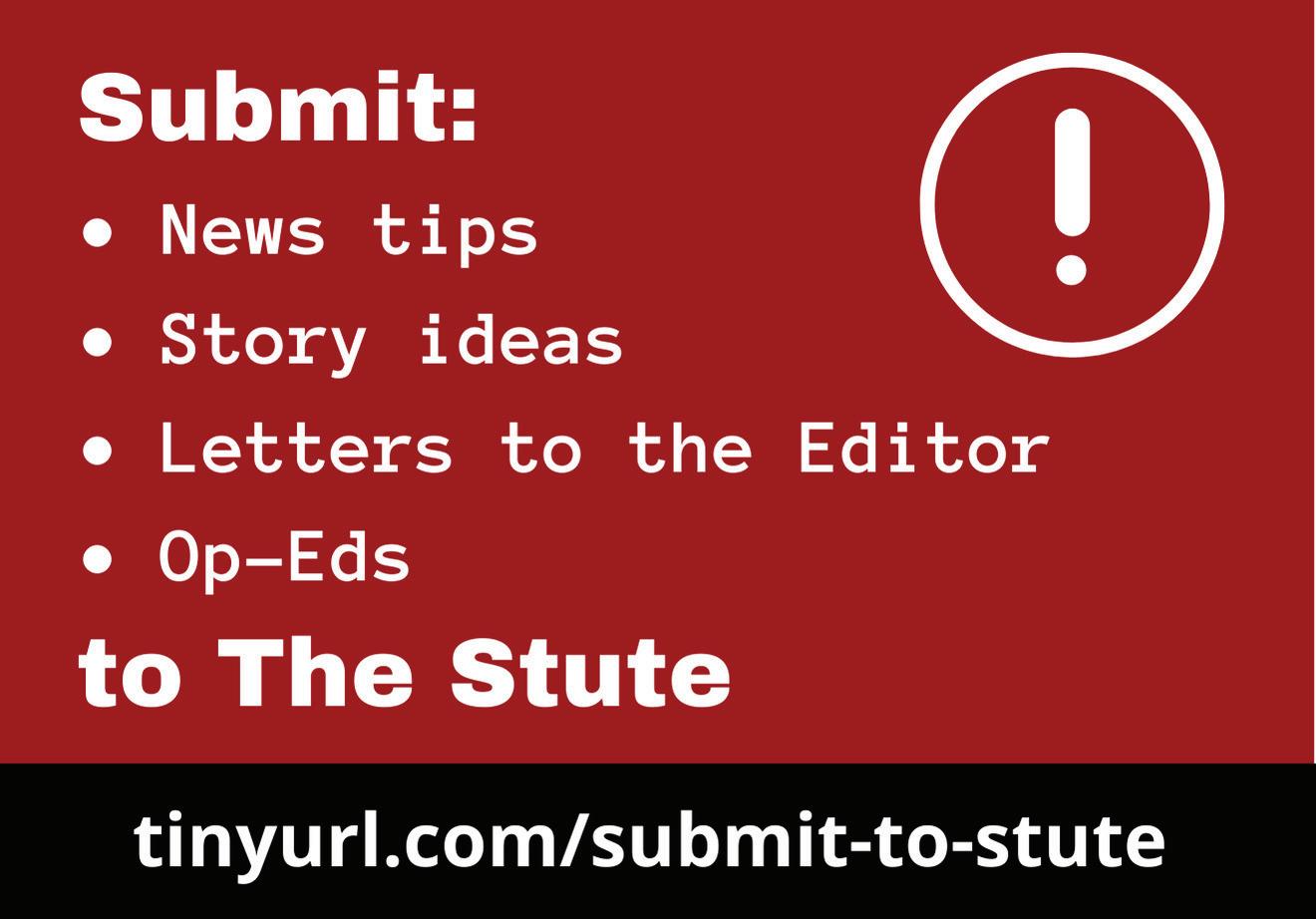
ots during the American Revolution. As a result of their allegiance, Colonel John was able to purchase a significant piece of land that had been confiscated from a Loyalist. This property is now known as Hoboken. Years later, Stevens Institute of Technology was established on the same land that Colonel John Stevens had acquired. This constitutional lecture is of importance to Stevens as, according to Professor Swindall, “it’s quite possible that Stevens Institute would not exist, especially in this geographical location, were it not for the position on the Revolution taken by the Stevens family and their participation therein.” As future leaders and innovators of the technical and business world, Stevens students must understand the inner workings of the Consti-
Americans across the country observe Constitution Day by commemorating the signing of the Constitution on September 17, 1787. This is a day of remembrance to the document that has served as the foundation of the American government for over 200 years.
Constitution Day fosters national unity by educating citizens about the shared principles of freedom and equality that define this nation. This year marks the 237th anniversary of this pivotal moment in history.
Constitution Day was officially established in 2004 when Senator Robert Byrd of West Virginia introduced an amendment to rename Citizenship Day as Constitution Day. This alteration broadened the day’s focus to include both the celebration of U.S. citizens and the honoring of the Constitution and American history. The amendment ensures the significance of citizenship and the importance of
the Constitution are equally emphasized in the observance.
This amendment mandated that all educational institutions that receive federal funds must provide educational programs about the U.S. Constitution come September 17. This was designed to ensure students are informed about the principles and role of the Constitution. Stevens is one of 4,000 higher education institutions in the United States to participate in this requirement. Being a federally funded institution, Stevens has lectures, discussion, and educational materials about the Constitution’s amendments and history offered on campus. Through these educational efforts, students and citizens are reminded of the values that continue to shape American society. Constitution Day serves as an opportunity for all citizens to reflect on the enduring importance of reminding U.S. history and acknowledging this nation’s growth.
J o i n u s i n P i e r c e D i n i n g H a l l f r o m 1 2 : 0 0 - 3 : 3 0 f o r o u r f o u r t h a n n u a l
P u m p k i n D e c o r a t i n g c o n t e s t S u b m i t y o u r p u m p k i n f o r y o u r
c h a n c e t o w i n a b l u e t o o t h s p e a k e r
S t e p i n t o a c u l i n a r y f i e s t a a t P i e r c e D i n i n g H a l l ! M a r k y o u r
c a l e n d a r s a n d p r e p a r e y o u r t a s t e b u d s f o r a t a c o e x t r a v a g a n z a
t h a t ’ s “ n a c h o ” a v e r a g e m e a l !
J
i n u s i n P i e r c e D i n i n g H a l l t o l e a r n m o r e a b o u t b r a i n - f r i e n d l y
f o o d s a n d w h y t h e y ' r e i m p o r t a n t f o r c o g n i t i v e f u n c t i o n
J o i n u s i n P i e r c e D i n i n g H a l l f r o m 5 : 0 0 - 7 : 0 0 f o r D I Y c a n d i e d a p p l e !
B u i l d y o u r o w n d e c k e d o u t a p p l e s l
SPEECH CONTINUED FROM PAGE 1
to demonize all conservatives because of the sins of past conservatives, but refused to share this view out of fear that the professor and students would see him as evil as well.
With the majority of undergraduate students being White, conversations about race may only involve input from minorities, as White students tend to feel uncomfortable providing input that will come across as harmful. A White student of the class of 2027 reported how they did not feel comfortable saying anything during a class discussion on American slavery because of the little authority his race gave him. They felt as though taking a stand could make them seem, “too sympathetic to slavery or too woke by [their] peers.” With racial minorities, especially Black students, being underrepresented, some White students have a common fear that they have no authority to form opinions about racial discrimination. There is always a fear that going against the opinions
of minorities will make them seem evil, while supporting the opinions of minorities will make it seem as though they are over-compensating or helping to push an agenda. This lose-lose scenario creates a monopoly on who gets to speak on certain topics, which divides students even further and creates an environment where forming an opinion on certain things can feel like the wrong thing to do.
Stevens’ lack of freedom of speech stems from the conversations that don’t happen due to a lack of willingness to share controversial ideas. One student of the class of 2024 stated that the upcoming election is yet another controversial issue people avoid talking about, as people who plan to vote for a candidate whom others are against run the risk of breaking relationships. It is true that certain ideals have been harmful to people in the past, but the act of making people uncomfortable expressing themselves at their school creates a much more toxic environment with more close-minded people. The conversations we avoid are the ones that will have a great impact on the lives of students, and all voices deserve to be heard.
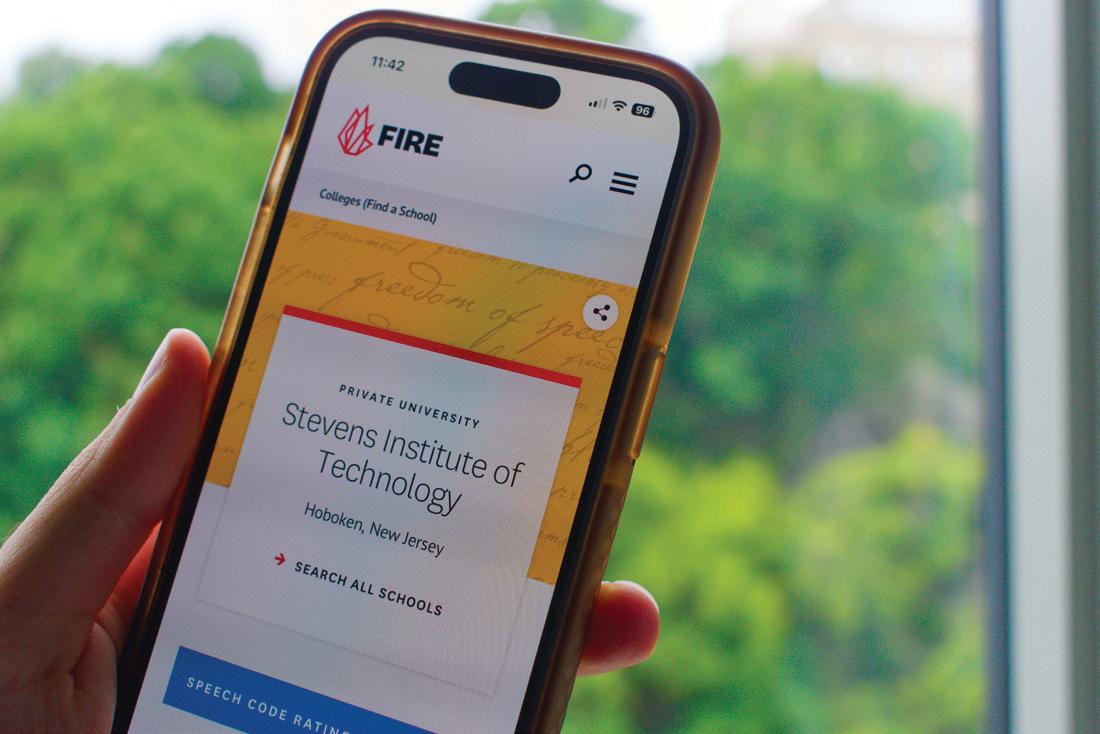
CONTINUED FROM PAGE 1
nificant strides in research, with externally sponsored faculty research awards soaring by 196%. This emphasis on innovation and inquiry enhances the university’s academic standing and fosters a vibrant community of scholars and researchers who are pushing boundaries.
Moreover, Stevens has been celebrated for its outstanding
CONTINUED FROM PAGE 1
Adams, and Rana Abbasova, Adams’s international affairs aid. The investigations on Adams’ fundraising continued into the next year as on February 24, the FBI scoured Winnie Greco, the mayor’s Director for Asian Affairs.
On September 12, just days after federal agents seized his phone, Edward A. Caban resigned as police commissioner. His attorneys, Russell Capone and Rebekah Donaleski, claim that they were informed that Caban wasn’t a target of the investigations. In his stead, former New York Homeland Security Director Tom G. Donlon was appointed as interim commissioner. Dolon’s homes were also searched and materials were seized. However, the classified documents were in his possession for over 20 years and the search warrants were unrelated to the police department. It’s unknown what agency con-
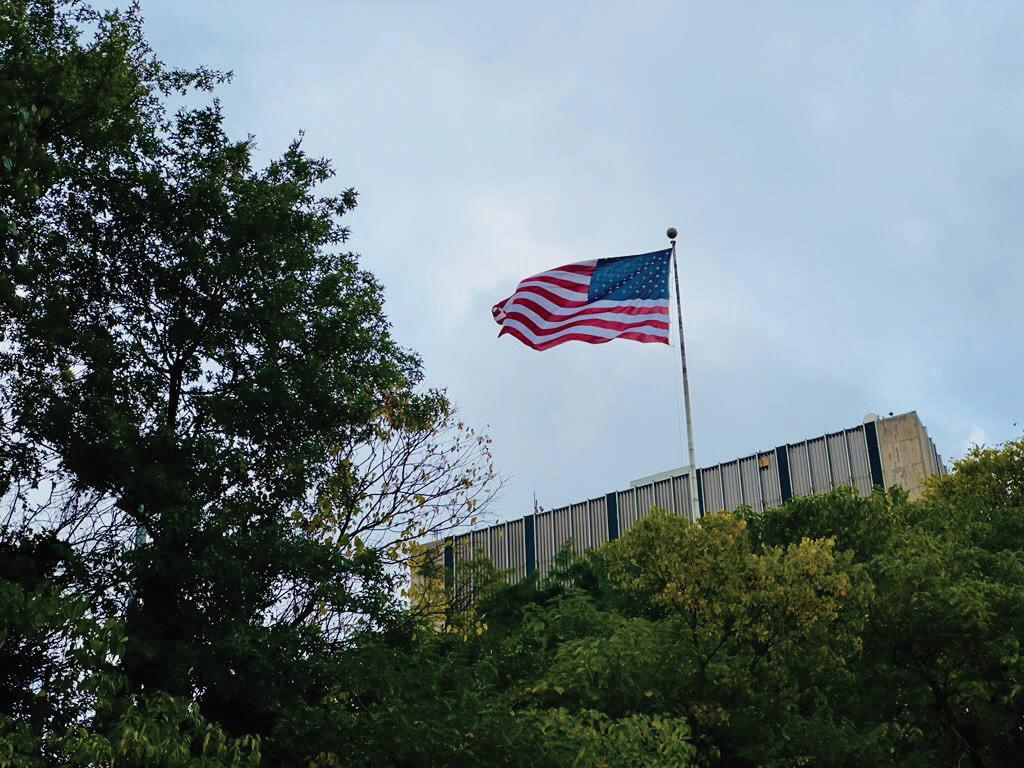
CONTINUED FROM PAGE 1
what the Federal Reserve System is. The Federal Reserve system consists of the Board of Governors who are appointed by the President and confirmed by the Senate. The Chairperson of the Board of Governors is currently Jerome Powell, who is also the Chairperson of the FOMC. The FOMC meets periodically throughout the year to discuss open market operations, of which interest rates are a key component. The FOMC, in its decision to lower interest rates, has taken action to lower the federal funds rate. The federal funds rate is the rate at which banks and other depository institutions lend funds to each other through an overnight transaction. Lowering the federal funds rate from 5.25%5.50% to 4.75%-5.25% would lower all other types of interest rates, such as mortgage rates or credit card interest rates.
The reasoning behind the FOMC’s decision to lower rates is multifold. Firstly, the Consumer Price Index (CPI), a tool that measures inflation on the prices that consumers pay for goods and services, showed that inflation had cooled to 2.5% from a high of nearly 10% in 2022 and close to the Federal Reserve’s stated target of 2% inflation. Secondly,
showcases inflation from the perspective of the cost to producers in providing goods and services, lowered to 1.7% in August. This data convinced several Fed officials to support rate cuts.
Moving onto what this rate cut means for average people, there are pros and cons. Many of the pros include revised interest rates for mortgages, auto loans, and interest on credit cards. This is good, as it allows more people to be able to acquire loans and make purchases since the cost of borrowing has decreased.
On the other hand, those who have invested in high yield savings accounts may consider alternative forms of investments due to the lowered interest rates. Additionally, those looking to get into investing and have not locked in bonds since when interest rates were higher may consider alternative forms of investment, as the yields on current bonds issued will not be as high.
With regard to the immediate effects of the Fed’s decision, the stock market soared, and the S&P 500 reached its 39th all-time high of 2024. It is still too early to map out all the effects of the lowered rates, but the Fed has stated that it plans more rate cuts. Therefore, it is best to map out your financial agenda with this information so you can make the best decisions for your future.
workplace environment, earning the Certified™ Great Place to Work® designation earlier this year. This recognition speaks volumes about Farvardin’s commitment to creating a supportive and engaging atmosphere for faculty and staff. His leadership has also garnered external accolades; he recently received the 2023 Chief Executive HR Champion Award from the College and University Professional Association for Human Resources (CUPA-HR), highlighting his dedication to human resources and employee welfare.
ducted the searches.
Meanwhile, Raul Pintos, chief of staff under Caban and commander of two Queens precincts, also had his phone seized. Pintos plans to retire in October. Furthermore, Caban’s brother, James Caban, owner of a nightclub-security business, had his phone seized. James Caban appears to be under corruption investigation as federal investigators are looking to see if he potentially profited from ties with his brother and the NYPD.
Moreover, the FBI searched the upper Manhattan home of Sheena Wright, first deputy mayor on September 4. Meanwhile, her fiance, David C. Banks, the Chancellor of New York City Schools, resigned on September 24 in the wake of a raid on his house on September 11. The day before the beginning of the NYC school year, FBI agents came into his house early in the morning. The agents wanted his personal and Department of Education cell phones, both of which he willingly gave. While the phones were returned, Banks’ lawyer claimed
These accolades and achievements resonate deeply with Stevens’ mission to equip students for the challenges of a rapidly changing world. Farvardin’s exceptional approval rating of 89% on Glassdoor.com further illustrates the respect and admiration he commands within the Stevens community. His placement among the top ten on the NJBIZ Education Power 50 list is a testament to his efforts to elevate Stevens’ prestige and honor over the past decade, as he continues to lead the institution toward even greater heights.
that the chancellor isn’t a target in the investigations. Furthermore, his brothers Philip B. Banks III, the deputy mayor for public safety, and Terrance Banks, a consultant, were also raided. Terrance’s firm, Pearl Alliance, is potentially involved in a bribery scheme with NYC contracts. To that end, the investigators gathered information from Timothy Pearson, one of Adams closest confidants and a senior advisor.
Those who were investigated weren’t charged with a crime and the current investigations are unrelated to Adams’ potential connections with Turkey. In an interview with CBS, Adams clarifies that he doesn’t know the reasoning behind the federal investigations but states “I say over and over again, as a former member of law enforcement, I’m very clear. We follow the rules. We make sure that we cooperate and turn over any information that is needed and it just really would be inappropriate to get in the way of the review while it’s taking place.”



BY BEN KNOBLOCH, NEWS EDITOR
This year’s election season has been dramatic and tumultuous, but a quick glance at election cycles of yore reveal that the more things change, the more they stay the same. The Stute archives reveal a long history of political engagement at Castle Point. In the spirit of the theme of this week’s edition, this piece takes a look at past campus reporting on elections and what it says about the university’s relationship with the broader arc of American history.
Strong negativity regarding the major candidates is not a new development, according to past news and opinion pieces. Shortly following the 1980 election, a prominent article entitled “Political Commentary” despaired over the quality of the two major candidates, Ronald Reagan and Jimmy Carter, and justified the writer’s choice
to vote for the independent John Anderson, who enjoyed particular support among college students that year. Before the election, one writer said that anyone thinking of voting to reelect President Carter “should get his head examined,” and simultaneously noted that he disagreed with Reagan on almost every issue.
To what extent does the student body align with the American public at large? A front-page piece on October 20, 1972 called on Stevens students to side with George McGovern for his antiwar position, noting “For anyone wishing to help, the McGovern Headquarters in Hoboken is located at 11 Washington Street.” McGovern would go on to lose in a landslide to incumbent Richard Nixon. Similarly popular among American students was antiwar Democrat Eugene McCarthy in 1968, whose visit to Seton Hall was reported on with great gusto
that April. That reporting marked a quick transformation in Stevens student opinion, which had previously been largely conservative. The top headline preceding the 1964 Presidential Election noted that “Stutemen” favored Republican candidate Barry Goldwater by a margin of 74% to 26%. Goldwater ultimately lost to President Lyndon Johnson by an enormous margin.
Prominent campus visits included then-House Minority Leader and future U.S. President Gerald Ford in 1968, who told Stevens students that “our generation’s record is not as good as we would like it to be, now it is up to your generation.” The next year, Kennedy advisor Theodore Sorenson gave a packed-house lecture to Ducks decrying the state of American politics at the time, citing the violence and division that convulsed the country in 1968.
While most students perceive
Stevens as a relatively apolitical university today, the revolutionary spirit of the ‘60s can be seen in many of the front-page stories of the time. Like at most American universities, the issue of the Vietnam War permanently hovered over campus. A major antiwar demonstration was held by Stevens and faculty in the fall of 1969. The next semester, enormous sections of each edition’s paper was dedicated to reporting on the state of the environment in conjunction with the national adoption of Earth Day. Just the next month, the infamous Kent State killings triggered a wave of sit-ins and student protests. The front page of The Stute paints a picture of a campus practically brought to a standstill by unrest and continuous strikes. That fall’s first headline read “[President] Davis Decries Campus Unrest.”
In more recent history, it was reported in 2016 that a new Col-
lege Democrats Club was forming in response to the results of that November’s election, with the goal of competing with the existing College Republican Club. Today, that organization is known as the College Democrats of Stevens, while the College Republican Club has been apparently inactive for several years. Other articles expressed shock at Trump’s unexpected victory over heavy favorite Hillary Clinton and speculated what the upset results portended for the future of the country.
A lot has changed in the political landscape over the past several decades, but some refrains appear perennial. This week’s edition displays the issues and events most important to the Stevens student today, continuing the university’s long tradition of notable—if relatively quiet—participation in the conflicts, catharses, and consternations of American election cycles.
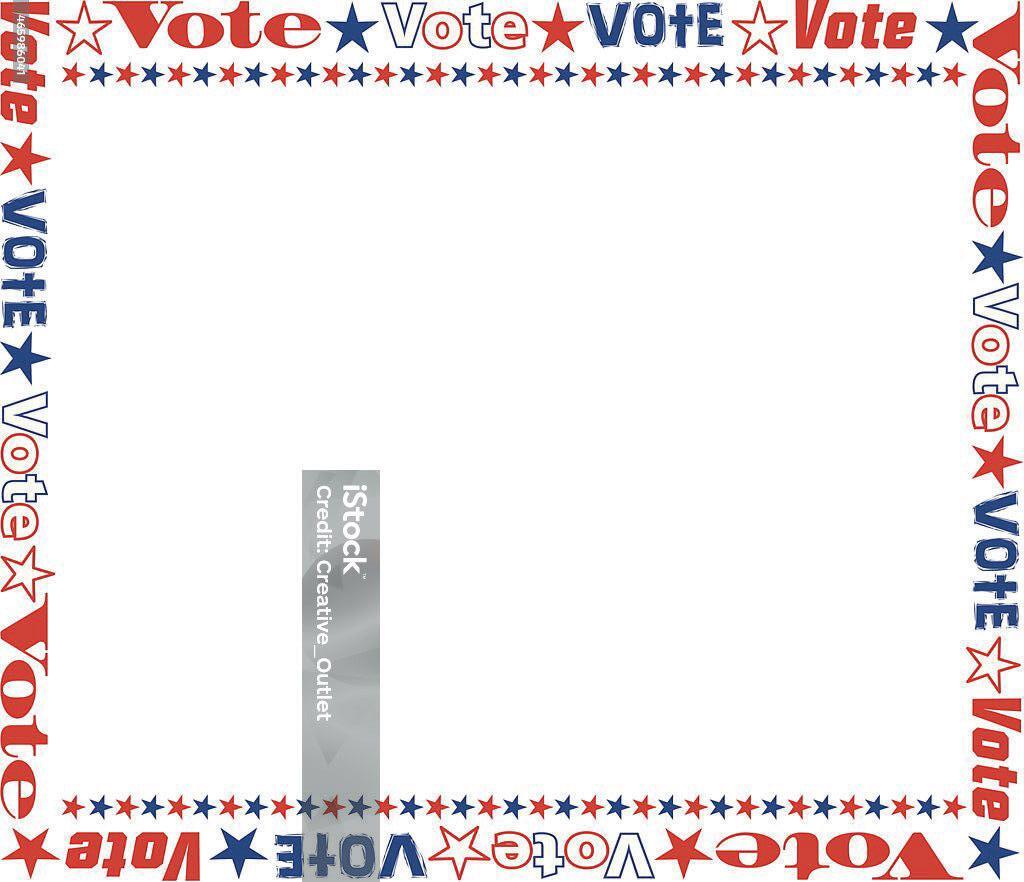
Understandably, one of the most commonly listed concerns was over abortion rights and women’s rights, particularly as many states have enacted more restrictive measures following the overturning of Roe v. Wade in 2022. This issue resonates strongly with many women on campus, but many men have identified it as a top concern as will. Abortion remains a crucial and contentious topic in this election; Three of the justices who voted to overturn Roe v. Wade were appointed by Donald Trump, the
The responses received by The Stute carried some common themes. Across the student body, there is a huge variation of thought on what is most important to us as individuals, as a community, and as a nation. No one believes that we are perfect, or have been perfect in the past. And although there may be disagreement on what is the most important issue currently, or what the most effective solution to those problems are, ultimately, all the students interviewed want to make our nation a better place for us and those that follow.
BY MADISON HELLER ‘27
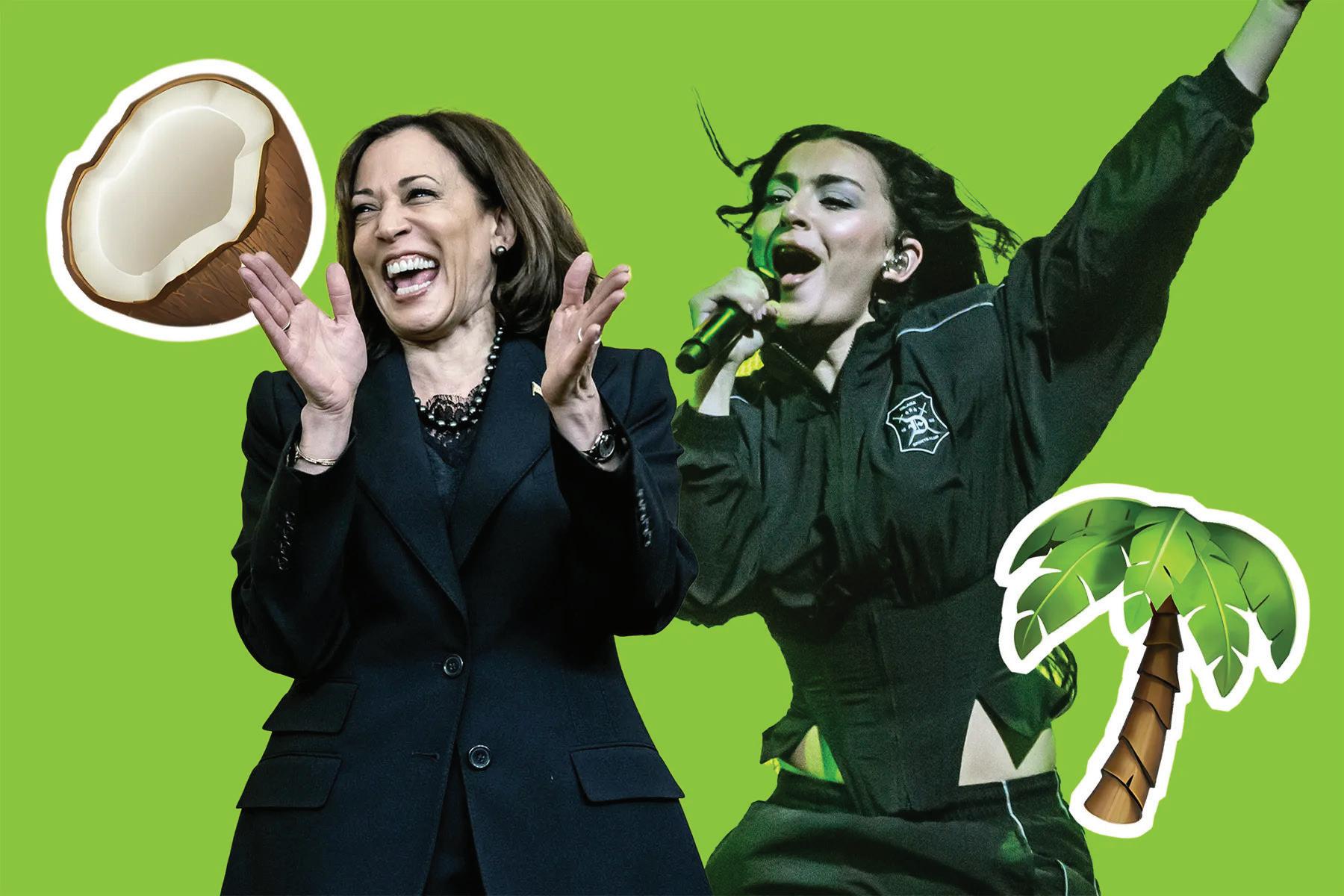

BY CHARLES BEALL B.S. ‘23 & PHD STUDENT
In 1971, as Stevens officially admitted its first women undergraduates, the United States ratified the 26th constitutional amendment, which set the national minimum voting age at 18. Previously, states set their own minima, and the predominant choice was 21. Pushback was built up from young citizens who could be drafted as early as 18 under federal conscription laws, leading to the fastest amendment ratification process in the country’s history. The next year, in the first presidential primaries where 18-year-olds of all states could register to vote, U.S. House Representative Shirley Chisholm, the first black woman to be elected to Congress, ran a historic presidential campaign, winning the New Jersey primary and coming in fourth at the Democratic National Convention.
A half-century later, U.S. college students have received a particular kind of focus in this year’s November elections. Of course, there was the Spring of encampments and other protests over Israel’s military campaign in Gaza, some of which have resumed this fall. Many other issues this election — the increase in the cost of living due to inflation and housing shortages, accessing abortion in the post-Roe landscape, court battles over student loan forgiveness and Title IX policy, and the evermore present specter of climate change all blend into a strong concoction that’s particularly hard for the just-come-of-age generation to swallow.
Moreover, for first-time presidential voters, this is a strange election in a few key respects. There are comparisons to 1972, when a black woman made huge strides despite no small amount of grumbling or hesitancy from establishment figures, on the opposite side of a Nixon-esque figure with strong views about the power of the presidency and a big bone to pick with perceived enemies during his first term. Or one
could liken it to four years prior, when Democrats met in Chicago for a convention at which their incumbent was not seeking reelection, and the U.S. was shocked by high-profile acts of political violence (thankfully, this year has not seen assassinations like the ones in 1968).
Before I finish up this tangent, I’d like to share my comparison, which is to 1920. Back then, primaries did exist but were nowhere near how they function today, so neither the Democratic nor Republican candidate had a “contested primary period” in the modern meaning. Perhaps more interestingly, though, a convicted felon, despite in his later years, retained something of a cult following among certain parts of the U.S. That’s where the comparison between Donald Trump and Eugene V. Debs, socialist standard-bearer of the early 1900s who received almost a million votes in 1920 while actually in prison serving out a sentence, ends.
Obviously though, finding exact historical comparisons to the 2024 election is impossible, and obscures the point of actually voting. I don’t claim to have the perfect definition or interpretation of this core civic duty, but to me, it’s a social compact among citizens to cast a ballot for the slate of representatives each one views as the best choice for addressing that citizenry’s issues and bringing it toward prosperity. This means voting, at its best, is a forward-looking act, putting trust in the candidates one believes in, as well as trust in the fellow citizens exercising their rights.
This year, the world has provided us with several examples of voters casting their ballots for change. In India and South Africa, while the incumbent parties either retained a majority or held onto control after building a coalition, voters sent a clear message that the status quo needed reform. The United Kingdom’s Labour Party made historic gains in Parliament after more than a decade as the opposition party. And in Taiwan, the Democratic Progressive Party
held onto the presidency, despite growing pressure from China, which supports the DPP’s rival. In all, countries consisting of half the global population will have held elections by the end of this year.
Those may be the highlights, but they’re worth remembering even with the saddening headlines that come from a particularly fraught global political climate. Democracy may be in retreat and violence on the rise, but voting offers us all a chance to make the courageous act of choosing the former over the latter. Our elections, despite their imperfections, are as secure as they’ve ever been, and we continue to have a rather free press determined to shed light on all aspects of politics (and life in general). We are able to vote because of the efforts of our peers from 50-plus years ago, chanting “old enough to fight, old enough to vote.”
This also brings to mind a family story for me. In 1994, my mom was going to visit her older sister in Pittsburgh. When my mom arrived, her sister was watching footage of South Africans voting in the first open elections after the fall of apartheid, where Nelson Mandela and the African National Congress made its historic victory. Polling stations were packed as people finally granted full citizenship cast their votes, with joy and tears. After watching that, my aunt, at that point a 20-something who was skeptical of voting, made a vow to never miss an election — and stuck with it until her untimely death in 2015.
So, you may say that this whole article has mostly discussed the past, which contradicts my point about focusing on the future when voting. I did write a lot about the past, that’s true, but I know very little about the future. I will never theless try my best to focus on that future when I cast my ballot, and I have faith that you all will too. That vigor to press for change is in all of us— we are a deeply motivat ed bunch at Stevens—and for that I trust that you will all vote with a remembrance of the past, and a focus on the future.
Understanding politics through data: DCinbox’s role in informing citizens
BY MADISON HELLER, OPINION COLUMNIST
It is mind-bogglingly easy to be misinformed about politics. In fact, there is often a direct incentive for people to be confused about what is going on and how the system works. Any candidate can promise the world on a platter to their voting base and win. This is significantly harder if there are people in the audience who know that the president isn’t all-powerful or that they can look up how their senator voted for any particular law. Part of this is that the general education system doesn’t emphasize citizenship or government operation in social studies programs as much as they say and instead emphasizes how cool George Washington was. However, to understand how Congress itself runs, people need to understand what individual legislators stand for. How they vote, what they propose, and how they run this country.
This is where projects such as DCinbox, run by Stevens professor of political science, Dr. Lindsey Cormack, come into play. DCinbox is a large database composed of all the newsletters sent by every single member of the Senate and House. It contains years’ worth of information up to September 2021, sorted by year and month, and follows its intended purpose perfectly. Information like this is absolutely
critical for understanding how Congress is run and how each congressman and woman presents themselves to their constituents. It is incredibly useful, not just to researchers in political science but potentially to normal people who want to be more informed on specific issues.
To use New Jersey as an example, currently, NJ has 12 members in the House of Representatives and two senators. If you want to know more about how the people who represent you and your neighbors in government think, vote, and represent your specific issue, you would have to subscribe to 14 different newsletters to figure out who believes what. This is objectively an insane thing to do when our emails are already bombarded with constant spam and advertisements. What if you wanted to learn more about what Cory Booker thought about Bob Menendez doing the most New Jersey crime imaginable (taking bribery in the form of gold bars and sewing said gold bars into his suits to hide them)? No one should have to deal with constant “Vote for Me” and “Donate Now!” emails for the crime of being curious. Now, to be clear, that information is not in the current version as this work takes a long time to catalog, but it is invaluable when it comes to research and understanding who our representatives are and if we still want them to represent us.
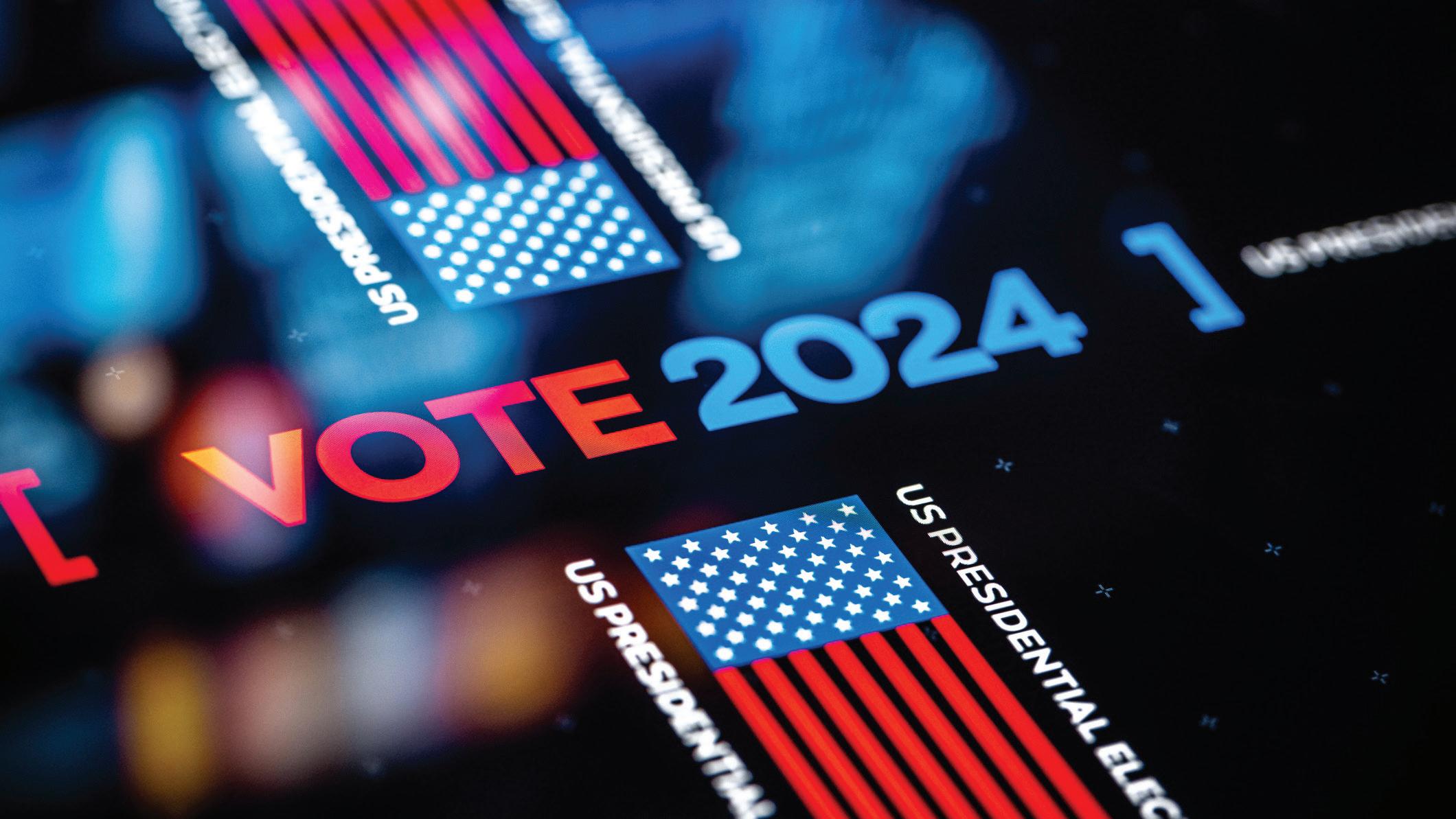
are Trump and Harris and where do they stand on issues? Voting as a Stevens student frequently asked questions
According to a survey conducted by The Pew Research Center last month, the top 10 issues for all U.S. voters in the 2024 election in order are the economy, health care, Supreme Court appointments, foreign policy, violent crime, immigration, gun policy, abortion, racial and ethnic inequality, and climate change. We selected four of those top issues and broke down where the candidates from the leading Democratic and Republican parties currently stand on these issues.
Former U.S. President; Real estate developer and media personality from New York turned political figure. Sitting U.S. Vice President; Former public prosecutor, Attorney General of California, and U.S. Senator.
Favors extending the expiring provisions of the 2017 Tax Cuts and Jobs Act. Favors a reduction in the corporate tax rate to 15% from 21%. Has voiced support for eliminating income taxes on Social Security benefits as well as taxes on tips. Highly protariff, and has indicated support for a universal 10% tariff. (Wharton, UPenn)
Proposes an “opportunity economy.” Favors higher taxes on businesses and high earners, including raising the corporate tax rate from 21% to 28% and hiking the top individual rate. Would also tax unrealized capital gains of high-net-worth individuals. Has voiced support for eliminating taxes on tips. (The Tax Foundation)
Favored increased defense spending and a pivot of defense strategy towards China and Russia as President, but is critical of NATO and noncommittal towards additional aid to Ukraine. Favors a tough stance towards China, especially on economic issues. Favors strong support of Israel and Saudi Arabia and an aggressive posture towards Iran. (Council on Foreign Relations)
Voices strong support for NATO and the U.S. commitment to Ukraine. Favors a tough stance towards China, especially on human rights issues. Supports a cease-fire in the Israel-Hamas conflict, has voted for arms restrictions against Saudi Arabia, and endorsed the Iran nuclear deal. (Council on Foreign Relations)
Promises the “largest domestic deportation operation in American history,” which will involve the expansion of ICE authority and facilities. Would reinstate the “Remain in Mexico” and “Safe Third Country” agreements. Conversely, favors automatic green cards for noncitizen graduates of US colleges and universities. (Peterson Institute)
Supports increased funding for border agents, detention facilities, and fentanyl detection technology at the southern border. Also supports increased levels of legal immigration through the creation of additional employment- and family-based visas. (Peterson Institute)
How can I register to vote in Hoboken? You can register using your Stevens address! (1 Castle Point Terrace Hoboken, NJ 07030)
You will need a NJ ID/license OR Social Security Number for non-NJ residents. Visit https://voter. svrs.nj.gov/register to learn how to register.
Note: There are good reasons for registering and voting at your college address or your home address, but keep in mind, the final decision is yours.
What if I registered to vote at home?
If you registered at home but want to vote in Hoboken, no problem! You can register to vote at multiple addresses or states, as long as you only vote in the election once. Voting twice is a felony - Don’t do this!
If you registered at home and want to vote at home without travelling back, you can request a vote-by-mail ballot. Check your state deadlines to request on time.
Where can I learn more about voting?
library.stevens.edu/vote/ www.nj.gov/state/elections/vote-students vote.gov/guide-to-voting/college-student
When is the deadline to register to vote?
The New Jersey voter registration deadline is October 15! Check your registration at www.nass.org/can-I-vote/voter-registration-status
So TikTok taught you about Ashwagandha, but can you actually trust it?
BY TIANNA SPITZ, FEATURES EDITOR
The ashwagandha bandwagon is a party bus heading straight to TikTok anecdotes and WebMb speculation. That mental list of pros and cons towards actually taking the natural supplement has become the game “two truths and a lie.” Speaking from experience, the wellness movement has merged with the traditional and medicinal properties of natural supplements to create recent buzz surrounding the reported stress and anxiety remedy. “Indian ginseng,” its Sanskrit name Ashwagandha– “ashwa” for horse and “gandha” for smell and gaining the power of a horse from consumption–and scientific root name Withania somnifera is a medicinal herb that accumulates many names from a rich history based in traditional Ayurvedic and Unani medicine dating back to 6000 BCE.
Ashwagandha is derived from an evergreen shrub native to the subtropical areas of India, Africa, and the Middle East. The supplement is often taken in the form of powders, capsules, tablets, liquid drops and gummies that contain the plant root extract with the packaging often promising less stress and improved beauty sleep. The latin word somnifera refers to “sleep-inducing” as the plant belongs to the nightshade family and is most commonly used to reduce anxiety and stress. The wellness community’s broader claims such as boosting concentration and immune health, dulling emotions, and weakening birth control are unconfirmed due to glaring research gaps that haven’t fully explored the long-term effects of ashwagandha on a credible scale. So what is the chemical component of the plant and who should or shouldn’t take it? Ashwagandha is classified as an adaptogen, a compound or product that in-
creases the ability of a person to resist or adapt to biological, physical, or chemical stressors, through the active components of withanolides, alkaloids, and sitoindosides which and are conventionally used for the treatment of multiple brain disorders. To break down the components in action, withanolides found in the roots and leaves are considered similar to steroids in their biological activities and contribute to anti-inflammatory properties comparable to hydrocortisone. In the leaves, a compound called triethylene glycol was identified as an active sleep inducing agent with prospects for alleviating insomnia. The TikTok claims of reduced stress and improved sleep hold true as the Ashwagandha is being investigated as an anti-inflammatory and immune boosting agent. In the fine text, reported side effects include stomach and bowel irritation, nausea, and drowsiness which can surface after about three months of con-
secutive use. Health providers advise that pregnant people should steer clear from the supplement as high doses can lead to miscarriage in rare instances.
Despite prominent use in homeopathic medicine, a form of alternative medicine, and traditional botanicals, the full extent of the health benefits are still under review and current studies have limited data. Most studies have examined ashwagandha in the context of traditional Ayurvedic medicine based on holistic healing, as the prototypical botanical medicine and pharmacopeia remains isolated from the clinical data.
“There’s a lot of wisdom in tradition,” says Denise Millstine, an integrative medicine specialist at the Mayo Clinic in Arizona, “so that shouldn’t be thrown out the window just because there [is] a lack of randomized controlled trials,” she tells Science News. A 2021 study in the Journal of Herbal Medicine found that the supple-
ment can alleviate perceived stress and anxiety, while reducing levels of the stress hormone cortisol released by the hypothalamus-pituitary-adrenal axis when compared against placebo treatment. To corroborate, in another double-blind study of 64 subjects, on average the subjects rated their stress 44% of them lower after taking ashwagandha for 60 days. Sleep studies of 144 subjects suggest the supplement can help people fall asleep faster and for longer, sleeping up to 25 minutes longer and wake up to 12 minutes less, which was most effective for insomniacs.
With relatively smaller studies that don’t last beyond three months, pre-clinical data suggests mood enhancing benefits that mirror traditional Ayurvedic use. Regulated tablet doses of Ashwagandha have been used in homeopathic settings to manage stress and fatigue, and clinical data is playing a game of catch-up to explore further drug potential.
BY ERIN MCGEE, SCIENCE WRITER
Our planet has many fields: corn fields, gravitational fields, and magnetic fields. However, for decades, scientists have been unable to measure Earth’s electric field. That is, until now.
Earth’s electric field was first hypothesized 60 years ago when scientists flying over the north and south poles detected that particles were leaving the atmosphere into space at supersonic speeds. It was predicted that some weak field had to be drawing these particles out, but detecting such a field was too technologically advanced for the time.
The discovery was made by
a NASA’s Endurance mission, a part of which was a suborbital rocket launched from Svalbard, Norway, just a few hundred miles from the North Pole, in May 2022. Nineteen minutes later, the rocket crashed down in Greenland, having successfully measured the electric field over the north pole. Since then, the data has been analyzed by NASA scientists, who recently published their results. The field is in one of the upper layers of our atmosphere, called the ionosphere. Positively charged ions and negatively charged electrons in the atmosphere are tethered together by an electric field between them. The field is described as being bidirectional or “ambipolar,” with the heavy
ions pulling the electrons down with them as they fall with gravity and the lighter electrons lifting the ions as they try to escape into space. Some of these ions are lifted high enough to escape into space, causing the stream of particles at the poles that were measured decades ago.
The field is extremely weak, only 0.55 volts, a lower voltage than your watch battery. For this reason the miniscule changes in potential have to be felt over miles, as Endurance was able to measure. This required a special device, which was invented specifically for the Endurance mission. The team, led by Glyn Collinson of NASA’s Goddard Space Flight Center in Maryland, developed a
new instrument called a photoelectron spectrometer. This device measures the energy spectra of electrons in the upper atmosphere, which can be compared to previous calibrations to measure the electric field. Despite the field being so weak, it is still powerful enough to propel ions into space, which have been measured in this experiment. Further research will involve looking into how the electric field could have shaped the development of life on Earth, the formation of water, and allow us to learn more about other planets. Any planet with an atmosphere should have an electric field, even a weak one, so this recent discovery opens a new area of research in planetary science. Scientists are specifically looking at what this new data can illuminate about the differences between Earth and Venus. The European Space Agency discovered in 2016 that Venus had a strong 10-volt electric field, which likely removed positively charged oxygen particles from the atmosphere and prevented water from forming. Further investigations will be done to study why Earth’s electric field is substantially weaker, and why water was still able to form. This field is as fundamental to Earth as our gravitational or magnetic field, and reanalyzing our planet’s history with this newfound context will be an upcoming challenge for scientists.
BY RIYANA PHADKE, SCIENCE EDITOR
Attention all coffee drinkers! Turns out, your daily caffeine fix might be doing more than just keeping you energized—it could be protecting your heart.
Recent studies suggest that drinking more cups of coffee a day may actually help reduce the risk of stroke, type 2 diabetes and coronary heart disease. These diseases are collectively known as cardiometabolic multimorbidity (CM), which refers to the coexistence of one or more of these conditions. In recent years, there has been a higher prevalence of individuals with CM, leading to greater public concern as the world ages.
“Consuming three cups of coffee, or 200-300 mg caffeine, per day might help to reduce the risk of developing cardiometabolic multi-
morbidity in individuals without any cardiometabolic disease,” said the study’s lead author Chaofu Ke, M.D., Ph.D., of the Department of Epidemiology and Biostatistics, School of Public Health at Suzhou Medical College of Soochow University, in Suzhou, China. The newest study found that compared to non-drinkers or caffeine consumers of less than 100 milligrams per day, consumers who drank about three cups had between a 40.7% and 48.1% reduced risk of onset CM. Ke and his colleagues based their findings on data from the UK Biobank, which conducted a detailed longitudinal study with over 500,000 participants from ages 37 to 73. The pool of participants included a total of 172,315 individuals who did not have any cardiometabolic diseases for analysis of caffeine consumption and a corresponding 188,091
individuals for the analysis of coffee and tea consumption. The participants’ outcomes were identified from self-reported medical conditions, primary care data, and records from the UK Biobank. In short, coffee and caffeine intake were inversely related to the risk of new-onset CM at all levels in participants without cardiometabolic diseases. More interestingly, those who reported moderate coffee intake had the lowest risk of entering the developmental stages of CM. “Caffeine intake at different doses could have different health effects,” Ke wrote in an email. Coffee drinkers had the lowest risk of CM, with nearly a 5% reduction, and people who got 200 to 300 milligrams of caffeine from tea or a mix of other beverages saw similar but smaller benefits. It was noted that the benefits for tea drinkers after three cups a
day tapered off. People who drank four or more cups of coffee a day demonstrated no adverse effects to their cardiometabolic health from the stimulant. Among people who did develop cardiometabolic disease later on, such as type 2 diabetes, were still less likely to develop another disease, like coronary artery disease, if they drank moderate amounts of coffee.
These findings were published on September 17 in the Journal of Clinical Endocrinology & Metabolism. However, while researchers and doctors are taking this new information with stride, many caution that caffeine is not beneficial for all people. Dr. Luke Laffin, co-director of the Center for Blood Pressure Disorders at Cleveland Clinic, notes that these findings can only be taken in context. “Too many cups of coffee can raise blood pressure in someone who already
has hypertension,” Laffin said. Additionally, there are many studies that show a correlation between high levels of caffeine and dementia and reduced kidney health. Dr. Stephen Kopecky, a preventative cardiologist at the Mayo Clinic, notes that a person’s underlying health issues are important to consider, and the way a person consumes caffeine can make a big difference in how it affects their health. “The message I don’t want to get out there is that caffeine is good, so let’s take more of it. We have never found that taking what is good in the diet and putting it in a pill is equally beneficial,” Kopecky said.
In the end, there is always more to discuss and study when it comes to the human body and what is beneficial to it. As many scientists, doctors, and nutrition experts say, everything is good in moderation.
Mapping the maternal mind: recent study breaks down ‘pregnancy brain’ and its neurological impacts
BY JEREMIAH CHINWENDU, STAFF WRITER
Pregnancy is a profoundly understudied period of growth and development that millions of women each year experience. During this time, the body undergoes extreme hormonal and physical changes that are similar in magnitude to the overhaul seen during puberty. Previous studies on the effects of pregnancy on the brain have only yielded a snapshot comparison between women’s brains before and after pregnancy, an approach that has given little information on this topic. Earlier this month, Dr. Elizabeth Chrastil of the University of California Irvine conducted a study in collaboration with other researchers wherein neuroimaging techniques were used to track her brain through her own pregnancy in order to create the first comprehensive map of her brain’s evolution through pregnancy.
The team who conducted this study performed 26 different MRI scans before, during, and after Dr. Chrastil’s pregnancy and compared those scans to other non-pregnant women in order to map the brain’s changes. They conducted “four MRI scans before pregnancy, 15 scans during pregnancy and seven scans in the two years after the baby was born”, writes Laura Sanders of ScienceNews. This approach covered the entire arc of the pregnancy and gave insight into its lasting effects on the brain, which can help us to understand the causes of postpartum mental health issues that are common amongst mothers.
Previous research has noted a decrease in gray matter, a tissue composed of cell bodies and dendrites that controls movement, memory, sensation, and emotions. The research team confirmed this in their study, where they found that the volume of gray matter was reduced in “80 percent of the places in the brain […], shrinking
on average by about 4 percent of its starting bulk”, writes Sanders. Areas with the highest loss of gray matter, and loss of thickness in the cerebral cortex, included the, “default mode network, which is associated with social cognitive functions”, writes Kristen Rogers of CNN. The scans from the study also revealed“increases in cerebrospinal fluid and white matter microstructure in the second and third trimesters”. White matter helps areas of the brain communicate with each other, and cerebrospinal fluid provides “nourishment, protection, and waste removal for the brain”, said Rogers. Drops in both of these areas have been linked to the rising levels of estradiol and progesterone, two hormones that play a major role in reproduction.
In the two years following her giving birth, some of the changes seen in Dr. Chrastil’s brain had reverted back to normal. Others, including gray matter volume and cortical thickness, remained
the same as they were during the pregnancy.
This study not only lays the groundwork for future research in pregnancy-related neurological studies, but also makes note of various dynamical changes that affect women during and after pregnancy. Experts say that while findings of this study have been corroborated with the experiences of other pregnant women, larger-scale research has to be conducted to strengthen the conclusions drawn. Findings from this study support some methods that can be used to help women physically and mentally prepare for pregnancy in order to prevent common complications. Results about the lasting impact of pregnancy give way to the study of the reasons for postpartum depression and other mental health issues new mothers express, allowing us to predict them before they happen.
What used to be jokingly referred to as “pregnancy brain”
is now a phenomenon being analyzed using advanced imaging, computer algorithms, and other biomedical innovations. Emily Jacobs of University of California Santa Barbara, who worked on this study, told CNN, “of the 50,000 brain imaging articles published in the last 30 years, less than half of 1% focus on health factors unique to women, like pregnancy.” Ignorance on the topic of women’s brain health through pregnancy has prevented doctors from predicting mental health and physical complications of new mothers. Results of this study are being analyzed by scientists around the world, as an international effort called the Maternal Brain Project was launched to further pregnancy research. Supporters include UC Santa Barbara’s Ann S. Bowers Women’s Brain Health Initiative and the Chan Zuckerberg Initiative. A push for a better understanding of pregnancy will help improve care for new and expectant mothers.
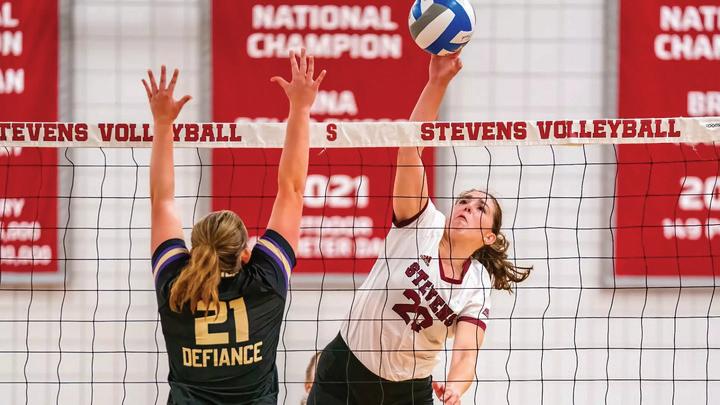
BY CAMRYN WINANT, SPORTS WRITER
On September 20 and 21, the women’s volleyball team hosted Stevens Quad Match #2 against Wentworth Institute of Technology (WIT), Montclair State University, and William Smith College. The first day involved two matches with the Ducks taking both matches including Wentworth in four sets, and Montclair in five sets. The first set of the first game against WIT seemed to test the Ducks at the beginning as they seemed to struggle with keeping up with the Leopards’ lead. With a kill from graduate student Elle Maggio, a solo rejection and three points from graduate student Meg Dion, seven points from Dion and sophomore Molly Harris, and three kills from senior Parker Adkins, the Ducks were able to finish that set with a 25-22 win. The second set had a stronger start for the Ducks, with notable serves from Dion, Harris, and senior Bailey
Axelrad and kills from Adkins, Dion, junior Vivian Lisboa, and senior Cleo Shannon. Lisboa and Dion closed out set two, ending the set with a 25-12 win for Stevens. Staying tied up with WIT throughout the third set with a kill from Shannon left it pretty hopeful for the Ducks. The Leopards got the final three points, ending the set with a score of 2527 for WIT. The Ducks were eager to make a comeback in the fourth set, with Adkins making three kills. While the Leopards were able to block two points, Maggio ended the set with a kill and a score of 25-16, giving the Ducks the win for the match with a 3-1 score. While the Ducks took an early lead in the first set against Montclair, the Red Hawks were able to get a one up on them. With kills from Adkins, Harris, and Dion, Stevens was able to take the lead again. With the set point by Maggio off a set from Harris, the first set ended with a score of 25-19. Despite kills from Dion and Adkins,
Montclair carried a heavy lead throughout the second set, and they were able to come out with a 20-25 win for the set because of an attack error. The third set saw ties all throughout the game, and when Montclair would lead the score, Stevens would match them with a tie. However, the Red Hawks tallied the final seven points, and won the set 19-25. The Ducks got a 17-9 lead in the fourth set, with four kills being from Lisboa. With a kill from Maggio, an ace from Harris, and Dion pinning a set from Harris, the Ducks won the fourth set 25-13 and tied the game 2-2. The Red Hawks took a lead in the tie-breaker set before the Ducks tied up the game. With two kills from Adkins and a kill from Dion, the Ducks won set five 15-13, and the game 3-2.
The next day, the Ducks went up against William Smith. Early in the first set, Stevens put out an early lead of five, with three kills from Lisboa. With blocks from Dion and first-year Ella Kraver, and a hit from Harris, Stevens
BY RUTHIE MULLISKY, SPORTS EDITOR
The Stevens men’s soccer team faced tough competition during last week’s schedule, where they faced off against SUNY New Paltz on Wednesday, September 18, followed by a game against Kean University on Saturday, September 21. Against New Paltz, the Ducks lost 0-1, and against Kean, the Ducks tied 0-0.
The game against New Paltz was truly a hard-fought game, even as the game was slated on the team’s schedule as a “Duck Challenge Game.” The Ducks held off New Paltz for the entire first half of the game, working together to stop shots from entering the goal early on in the game. Nine minutes into the first half, graduate student goalkeeper Guillermo Castaneda-Chang defended the goal from New Paltz’s first shot. In the 24th minute, the Ducks returned the favor, with senior Adam Berrocal’s shot on goal, marking the Ducks’ first shot on goal of the
game. The teams went back and forth with shots, until in the 79th minute of the game, New Paltz finally took a shot that passed Castaneda-Chang and hit its mark, bringing New Paltz up to one goal. Although the Ducks were unable to score in this game, this game was played on the defensive end, where Castaneda-Chang man aged to match his season-high in saves with five saves.
The game against Kean was equally a battle for the Ducks. Like the game against New Pal tz, Castaneda-Chang stopped two shots on goal in both the 17th and 25th minute of the game. Keeping this momentum going on the offensive side of things, first-year Matthew Murillo took a shot in the 37th minute only to be stopped by Kean’s goalkeep er. For the remainder of the half, both teams battled for control of the ball in the midfield, unable to get a shot off. In the second half, during the 62nd minute of the game, junior Brian Babovic took the Ducks’ sole shot on goal that
unfortunately ended up high over the goal.
These games bring the team’s overall record to two wins, two losses, and three ties as they pre -
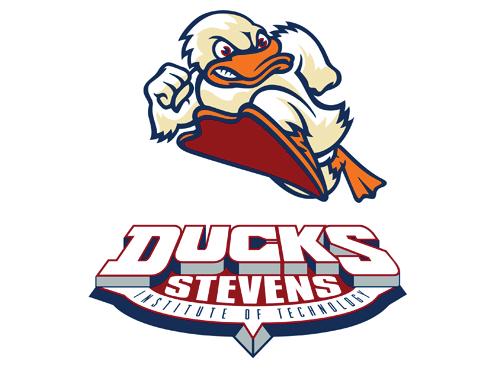
TENNIS ITA Atlantic South Region Championship–Day One Fredericksburg, VA Time TBA
SAT, SEP 28
took the first set 25-22. With a hit from Adkins in the second set, the Ducks were able to get within one, but the Herons went on to score eight out of the eleven points, giving them a lead of six. After a kill from Dion, the Herons matched with two more points ending the set 18-25 with a win for William Smith. The third set didn’t go any better for the Ducks, despite a kill from Lisboa and attempts by the Ducks to close the gap between the lead. The Herons tallied the final two points for the third set ending it with a score of 18-25. Despite Kraver serving up an ace in the fourth set, William Smith took a quick lead, and even extended the lead to double digits. The match ended with the Herons taking the final points, ending the set with a score of 12-25, and the game with a score of 3-1 for the Herons.
The Ducks will be playing again on September 28 at Virginia Beach, against Christopher Newport University and Virginia Wesleyan University.
pare to head into conference play in October after hosting a game against the University of Rochester on September 28 at DeBaun Athletic Complex.
MEN’S TENNIS ITA Atlantic South Region Championship–Day Two Fredericksburg, VA Time TBA
MEN’S GOLF DIII Northeast Elite–Day One Williamsport, PA Time TBA
WOMEN’S AND MEN’S CROSS COUNTRY Messiah Invitational Grantham, PA 10:30 a.m./11:15 a.m.
WOMEN’S VOLLEYBALL
Christopher Newport University Virginia Wesleyan University Virginia Beach, VA 11 a.m./3 p.m.
HOCKEY Washington and Lee University Lexington, VA 12 p.m.
WOMEN’S SOCCER
York College of Pennsylvania York, PA 12 p.m.
MEN’S SOCCER
University of Rochester Hoboken, NJ 1 p.m.
SUN, SEP 29

MEN’S GOLF DIII Northeast Elite–Day Two Williamsport, PA Time TBA
MEN’S TENNIS ITA Atlantic South Region Championship–Day Three Fredericksburg, VA Time TBA
FIELD HOCKEY Roanoke College Salem, VA 12 p.m.
TUE, OCT 1
WOMEN’S VOLLEYBALL Arcadia University Glenside, PA 7 p.m.

BY EILIYAH SAROWAR ‘28
If you haven’t noticed, the theme for this week’s paper is voting. Unfortunately, my political career started and ended with passing AP Gov, so I’d like to take this time to complain about the voting system in my favor-
ite game: Dress To Impress (DTI).
Although DTI, a Roblox fashion game, might seem like it’s made for children, it’s recently been taking over our generation. Players construct an outfit based on a theme and vote for who is placed on the podium with a five star system. The game was created by a 17- and 14-yearold and started small, but now has been played over 2 billion times and collaborated with Charli XCX for an exclusive “brat” themed update. There’s even an extensive amount of in-game lore that people follow. I’ve grown closer to some of my
Stevens friends by playing together and even see some classmates playing during class.
I may not have paid the 10 dollars for the VIP version (which unlocks more outfits) but I’ve always loved fashion games. It started with a fashion game inside Fantage, a virtual world I was obsessed with when I was younger. After that I graduated to play Fashion Famous, DTI’s predecessor with similar mechanics but less customization options. I take the game embarrassingly seriously. There’s something addicting about piecing together things to make the outfit look aes -
thetically pleasing. With each round played, there’s always a guarantee you’ll see a horrible fit. And by horrible, I mean a dead lantern fly outside of Howe looks better. Some players don’t even attempt to change their clothes and keep the default gray avatar. I choose to leave those outfits at the default 1-star rating, and lo and behold - they get first.
Meanwhile, my outfit —the one I researched inspiration for on Pinterest and sent a screenshot to my friends for approval— got a grand total of seven stars, placing me last on the leaderboard. Is it because my
outfit truly was the worst? Maybe. But I choose to believe in a flaw in the game itself.
Players vote for each other, but can’t vote for themselves. If I were to vote honestly for each player, that would guarantee me last place. Many people choose to just not vote at all to avoid risking their placement. When people share their outfits on TikTok, the comments are always filled with people saying, “so cute! i’ll be generous: 2 stars.”
Funnily enough, there aren’t benefits to placing on the podium. The game counts the amount of stars you get which lets you lev-
el up and unlock exclusive clothes. The highest rank, Top Model, requires you to have 25,000 stars. If you get 25 stars a round, that’s 1000 games! Placing last place shouldn’t matter. Honestly, there’s a certain amount of validation I feel seeing myself up there. Even if it’s because I force my friends to give me five stars, it’s nice to feel praised for those brief seconds. If players worked together and gave each other five stars, there would definitely be more people with the Top Model rank. But for now, I’ll enjoy sparingly handing out my two stars.

BY AVA WANG ‘25
In my time as a Hobokenite, I have yet to risk a haircut here. Haircuts are a pretty personal action and entail some trust in your barber. They are tasked with
deciphering and executing my likely poor description of what I want the back of my head to look like — a sight that continuously eludes me but is seen by all those around me. I’ve encountered multiple anonymous posts to the Hoboken and Jersey City Locals Facebook group of individuals looking for advice on how to ‘break up’ with their haircutter, and I think the fact that these individuals feel the need to obscure their identity aptly summarizes the surprisingly intimate relationship level of a haircutter/haircutee.

using
I have a dressy event on the horizon, and I am in the market for a trim. In the past, when in need of a haircut, I would simply delay until a visit home to return to Marie — a talented and kind lady who runs a salon out of her home. Marie doesn’t advertise — it’s a word-of-mouth type of thing. My mom’s friend had put her on, and my mom in turn invited me to tag along with her. Marie has cut my hair for upwards of six years now, and has received all of my major life updates in hour-long sessions at ~four
months increments ever since. She’s seen me through the college application process, done my hair for prom, and renewed me after a major college heartbreak when I returned home with my tail between my legs. Aside from the whole absence of rapport with these Hoboken barbers, I would also just miss chit chatting with Marie and hearing about what her son and daughters are up to these days. Your hairdresser is a person you are choosing to have a conversation with as well.
In a pinch during fresh-
man year, I cut my own hair, which honestly if you haven’t tried it yet, is not as bad as you might think it would be. The first time I cut my hair was during the pandemic when I didn’t have much else of a choice, but the stakes were also low — only my immediate family would be seeing me for the foreseeable future. Both occasions of my self-hair cuttery luckily went off without a hitch, but I would not consider myself nearly skilled enough to cut it regularly; much less so other peoples’ hair. A few of my friends re-
Art is created through the things we experience as people, each piece of art is a representation of a story, even when there isn’t one. Every person has the ability to create; their unique makeup and perspectives develop who they are and
what they believe. Music is an incredibly powerful medium — its ability to connect people through sound is reflected through its relevance to culture. Music has evolved from stories and experiences and continues to give voice to those who are voiceless. As an artist, your ‘voice’ isn’t just vocals or lyrics, it’s also the fundamentals of who you are and what drives your art. Recently, I’ve been thinking about this and how my artistic identity has shaped who I am and the significance it has on the world around me. Music has an incredibly powerful ability to induce new perspectives in listeners, musical subcultures are
created through rebellion or sparked from major events inspiring people to speak up. The most powerful musical movements have been created in response to the decade defining events in the world. The musical commentaries that have been repeatedly made, shape the generations that create them. Analyzing the relationship between music and politics is incredibly interesting; whatever we see in our popular culture, will ultimately create that clapback of all the people who disagree, and it can be a very powerful thing. Artistic identity is built off of the ethics of the artist, the creation of art is a piece of who they are. This artistic
voice is significant in shaping the piece of art beyond its artistic form, the meaning matters. As a musician, I spend a lot of time thinking about the meaning behind what I write in my songs. I try to take advantage of the power of voice in my songs, sometimes they are subtle, metaphorical and filled with double meanings to get people to think. Sometimes, when things are more severe and I am more desperate for an outlet to scream from rooftops, I write more obviously in order to get the point across. However, words aren’t even a requirement. We take advantage of how much music can truly com-
BY JOSIE STRANO
municate. The movement of chords and harmonies construct entire worlds around us, even if we don’t realize. There will always be that one person who asks “Ummm where are the lyrics?” when meeting an instrumental song, but there is so much more beyond the lack of meaning that is presumed. Music has the ability to engulf emotion into whoever listens without words, ‘voice’ doesn’t necessarily mean exactly that.
Artistic ‘voice’ isn’t a sung melody or drawn-out belt, but rather the significance to the artist, what drives them. Art is created through struggle, or experience, our strongest move-
cently made the transition to Hoboken salons, and while they have all spoken positively about their experiences, I’m still on the fence on whether or not to make the trek home for this upcoming cut. Maybe it’s time to make the switch.
P.S. An insane statistic I heard a while ago is that licensed barbers, on average, require more training (1,300 hours) than badged police officers (650 hours). It is crazy that it takes more to hold scissors than it does to hold a gun. Food for thought!
ments have come through political turmoil and difference of opinion. 2024 being an election year inspires many conversations, and thoughts for artists in many ways. Approaching voting season, think about what your voice means to you, and what you can do to communicate it. If your art is meaningful to you, and all that stands behind it, it is your responsibility as an artist to get involved in the current topics in the world. Artistic identity is the way to express all aspects of your experience through art, it can allow people to hear exactly what needs to be heard, and it all depends on you.
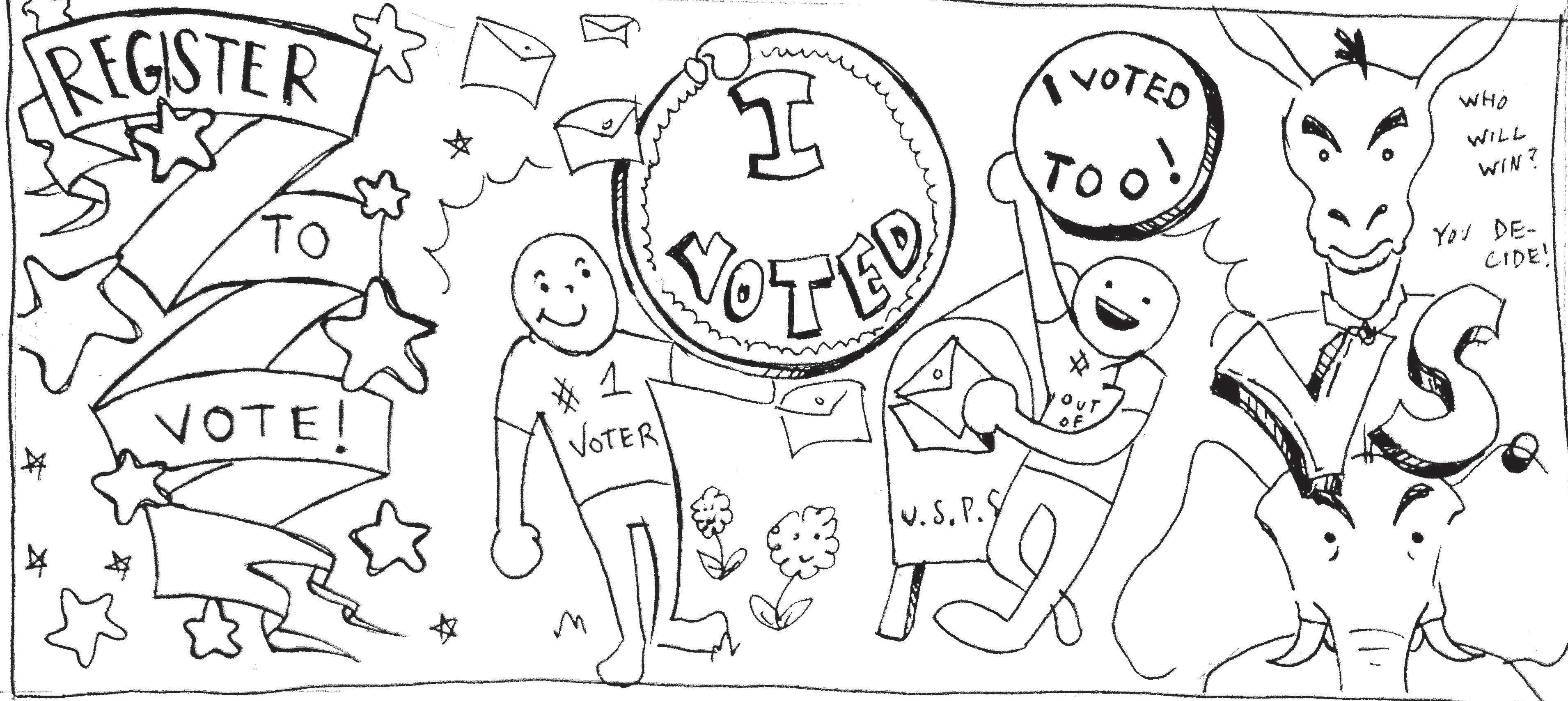
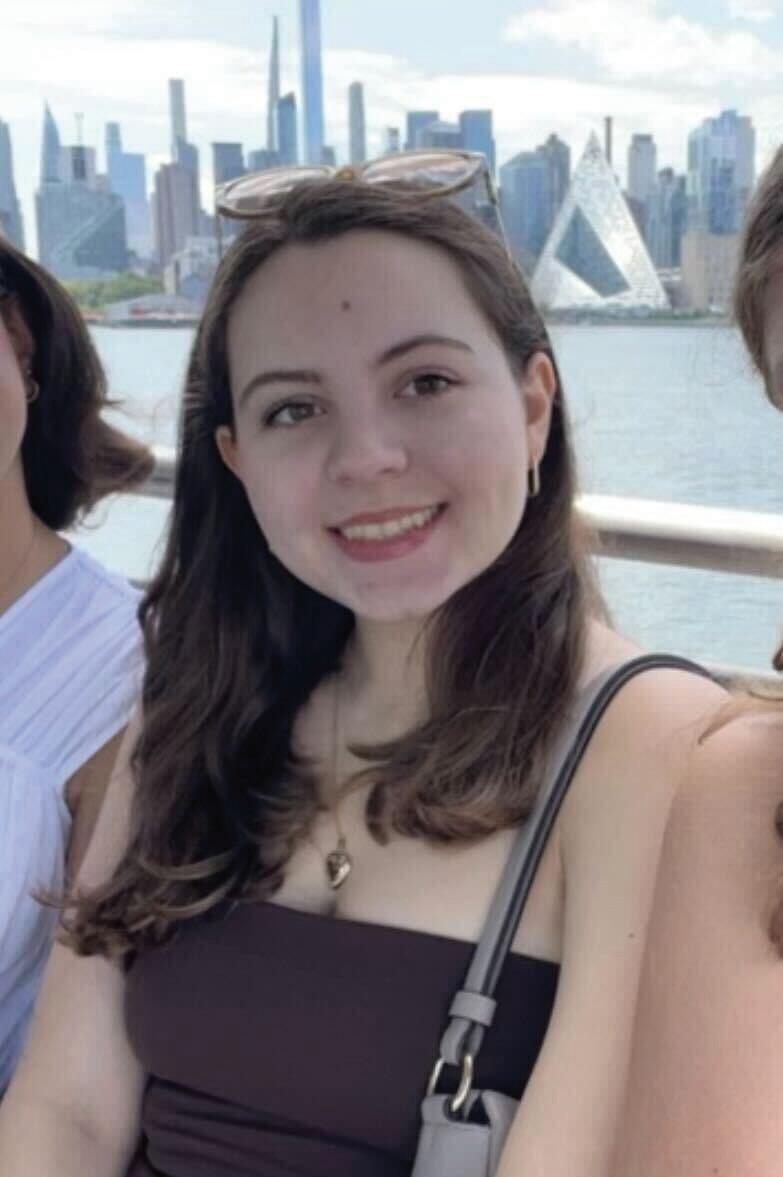
BY CHRISTINA THOMAS ‘26
collection of essays highlighting different observations Green makes about the world around him. They are always random in topic, varying from subjects such as sports games’ chants, Dr. Pepper, and all the way to the Plague, and always end with him giving his personal rating on the subject out of five stars. All essays follow a common theme, however, which is how these observations are made through a human lens. It is necessary to note that Green wrote this book during the COVID-19 quarantine period back in 2020, so there are multiple mentions of it throughout the book. While it was written during this tumultuous time, I feel that it adds an extra dimension to writing.
The main motif throughout the book is trying to find wonder in the mundane things around you, and Green does this effectively by showing you what he notices around him and what he finds notable in the life he lives. It is also semi-autobiographical as he includes anecdotes and stories about his life throughout. He mentions passages about his current place in life, with his family, as well as stories about his childhood and how his growth affects him to this day. However, these are more of a side “plot” as the main focus of each essay is the labeled topic at the start of the chapter. The book itself has no specific order and can be read independently from each other in any given sequence. This is a good read for someone who is trying to branch out into a non-fiction genre and does not want to read something dense. Green is known for his Young Adult novels, and the easiness of his writing continues in his essay collection. Some of my personal favorites are “ Academic Decathlon,” “Googling Strangers,” and “The World’s Biggest Ball of Paint”. Green is successful in introducing
you to the topic of the chapter and then convincing you to also care about it. However, since each essay concludes with a rating out of five stars, not all topics are light-hearted or necessarily positive. I think Green is adept at showcasing all the good things around us, as well as the bad.
I think the fact that the book was written throughout the COVID-19 quarantine period adds an extra element of authenticity to the book as it highlights the random ideas that Green was thinking about during this time of isolation from the world, which he does talk about. He is successful in making the essays relevant and interesting to readers who don’t necessarily seem to be intrigued by the chapter titles at first glance. The writing style is very easy to read and engaging. If you are a fan of audiobooks, I recommend giving this one a try. John Green narrates it himself and it makes it feel more personal. I like the earnestness in Green’s writing, and I think he is successful in making the audience care about what he has to say about the various topics that interest him.
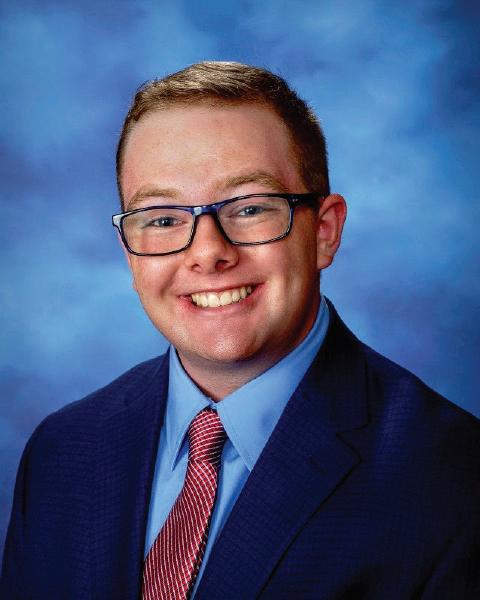
BY EVAN PAPAGEORGE ‘26
Cleaning is a must for college students (or hopefully is). Whether in an on-campus dorm or apartment, I hope everyone dusts, changes their sheets, cleans the bathroom, and does laundry — the essentials. For me, I am a full-on germaphobe and neat freak, so my place stays pretty spotless (except last week because I was sick). However, as we approach the end of the month, we also approach my monthly deep clean. Different than my regular cleaning (daily vacuuming and mopping, weekly emptying of the trash, cleaning of the bathroom, changing of the sheets/laundry, and dusting), my monthly deep clean includes:
• Disinfecting every surface.
• Moving all the furniture to get those hidden dust bunnies.
• Doing a deep scrub of the floors.
• Cleaning the fridge and
or
water filter.
• Cleaning the cleaning supplies (oh yeah, metacleaning!)
As I prepared for this upcoming weekend edition of this super cleaning session, I realized that, like most of my life, this was probably autistic. Unsurprisingly, it was! After a quick TikTok search, I found a mountain of videos of individuals with autism deep-cleaning their spaces. As I scrolled, I saw a barrage of rubber gloves, bleach, Clorox, Lysol, and homemade soaps. I realized that not only was this quite common for individuals with autism, but I also found some fun new products I might be trying!
However, It is unsurprising that individuals with autism might enjoy cleaning. The first clue is the high correlation between autism and OCD or other forms of anxiety. Additionally, cleaning can be very satisfying, especially seeing a room go from messy to clean and organized (ASMR-style). Cleaning also helps keep one’s hands busy, which is only some headphones with music away from some rarely-seen autistic focus.
Although I thoroughly love my monthly cleans (daily, weekly, and other randomly timed cleanings),
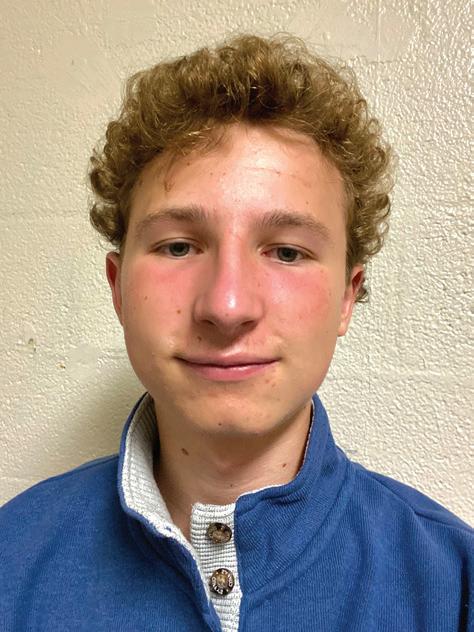
BY ITAI GELLER ‘26
Landscape painting is one of the most established genres of visual art, finding its roots in Western tradition during the Renaissance and evolving its identity over time as new styles emerged. Historically, art academics had rejected the necessity for paintings which depicted landscapes as the subject, preferring to focus on religious, political, and mythological themes until it was eventually embraced following the Enlightenment era. I particularly enjoy landscape paintings because while they typically feature human subjects, their perspective does not frame them as the im-

After a week of enduring greasy pizza at various events, my stomach had enough. Some may call me picky, but when it comes to pizza, I’m vouching for a slice that is fresh, flavorful, and worthy of the spotlight. In the buzzing pizza scene of Hoboken, there are plenty of contenders,
mediate subject, rather an addition to the overall composition of the piece. This is a very humbling perspective, one that allows for a deeper reflection on the greater reality and the vastness of the world. This week’s artist is Thomas Moran, an American landscape painter who was best known for his romanticist landscapes depicting the American west.
Moran lived through a period in American history which changed its economic and social landscape drastically. This period, known as the Gilded Age, saw a shift from a vastly agrarian society into an urban sprawl, fueled by rapid industrialization and expansion. While this era ushered in new technology, social reform, and economic growth, it also witnessed immense political corruption, economic inequality, and rampant destruction of natural environments.
During Moran’s career, he frequently traveled with geological surveying groups to the American West.
Finding inspiration in its grandeur, Moran took his experience with landscape painting and transferred these inspiring scenes to canvas, producing idealized depictions of its untouched land. Moran’s landscapes were painted through the Romanticist lens, an artistic and intellectual movement which heavily emphasized individualism, emotional glorification, and most importantly, inspiration in the natural world. This view in particular was majorly championed in response to the rapid urbanization and industrialization in America during the Gilded Age, which resulted in significant exploitation of natural resources, deforestation, pollution, and overgrazing. Moran played a direct role in raising awareness for these increasing environmental challenges, calling attention to the expansive beauty of the American West through the Romantic lens. He was successful in his attempts, as his paintings of Yellowstone garnered interest in this un-
but none stand out quite as much as Pizza Republic, offering huge, delicious slices of pizza. They do not skimp on portion sizes; a single slice of pizza is so big that it comes on two plates. Whether you want a quick bite between classes or to share a meal with a friend, Pizza Republic’s pizza is guaranteed to satisfy your cravings. One thing that sets Pizza Republic apart from the competition is that they offer an impressive variety, such as their Indian-inspired options like Chicken Tikka Pizza and Paneer Vegetable Pizza, adding a delectable sense of diversity to the menu. This unique pizza reminds us that sometimes it’s the
options that blend heritage and innovation that stand out. The price is incredible too, especially compared to other spots in town, and it gets even better — they have a generous student discount of 10%! Looking for a better deal? Pizza Republic’s lunchtime specials are a steal - for eight dollars, you get two deluxe slices of pizza and a drink or a wrap and a side for about $8.94. If you opt for cheese pizza instead of the deluxe pizzas then it’s just six dollars. These offers are up until 4 p.m. if you order online on weekdays so be sure to secure their amazing offers. Affordability is always a key factor for students, and Pizza Republic
touched territory, both for tourists and conservation advocates. Additionally, his paintings appeared in the report Ferdinand Hayden issued to Congress, which convinced them to establish Yellowstone National Park in 1872.
My favorite piece by Moran is “An Arizona Sunset Near the Grand Canyon.” I recently visited Arizona with my family and constantly yearn to return. It was a truly inspiring experience because of just how small the landscape makes you feel when you are amongst its towering rocks. Moran presents a similar depiction, painting a vibrant sunset which bears down upon the stream and the rocks which flank it. I am shocked by the volume which he manages to dedicate to the sky, as well as the intricacy of the detail to the scattered shrubbery. Landscape painting is such a deliberate craft, and I commend Moran for managing to emphasize even the slightest details. Moran is also masterful with per-
understands that, with big slices that come without the big price tags.
Pizza Republic also nails the atmosphere entirely. The woody, cozy ambiance creates an inviting space, making it the ideal spot to relax; it’s the kind of place you want to settle into on a rainy day, devouring a warm, toasty slice of pizza. Even on a warm summer day, it is the best opportunity to sit outside under a massive umbrella, blocking the sun, and enjoy your pizza while watching the people of Hoboken go about their day. For people like me and my friend, who often struggle with directions even with Google Maps, Pizza Republic was easy to
individuals with autism can struggle with cleaning. They can also struggle to stick to a schedule and routine, which could make tasks like putting clothes away, washing dishes, or wiping down a dusty shelf once in a blue moon a struggle. Additionally, cleaning can be a very stimulating activity. There are very fragrant sprays and liquids, weirdly textured things like hairballs, soggy rages, or other oddities one might find under their bed. While cleaning is necessary for all, individuals with autism can see it as their savior or torture. The satisfaction of transforming a cluttered space into an organized oasis resonates deeply with many, providing both a sense of accomplishment and a moment of calm. At the same time, cleaning can be a disaster that takes all day to do an essential task — ranging from sensory overload to difficulty maintaining routines. Whether you’re a neat freak like me or still figuring out your cleaning routine, remember that a clean space can lead to a clearer mind, paving the way for a more focused and productive college experience. So, as we head into the new month, let’s commit to keeping our spaces tidy and recognizing the unique ways different individuals see cleaning.
spective; I particularly enjoy how he illuminated the foreground and casted the rest of the piece in shadow. This creates a sinking effect in the canvas which makes room for the viewer’s eyes to creep further into the horizon.
Thomas Moran’s work successfully exemplified the manner in which art serves a powerful medium for reflection on deeper societal and environmental concerns, blending artistic mastery with a message of conservation and reverence for the natural world. His
Romanticist landscapes invited viewers to step beyond the confines of industrialized society and reflect on the grandeur and fragility of untouched wilderness. However, it’s important to consider that YOU don’t have to wait for inspiration to take action. Inspiration doesn’t have to be a passive experience. Whether it motivates creative expression, community involvement, or broader social change, the power to make a difference is always within reach. Take action, and let your voice be heard (VOTE TODAY!).

find thanks to its proximity to other popular restaurants. If stepping out is not an option, tap your phone for a quick Grubhub order. The pizza arrives hot, reheats perfectly, and still feels like a fresh slice from the oven. The best part of the pizza is the long cheese pull between every delicious bite. Customers also praised their Indian-style Paneer Pizza, mentioning its well-balanced and fresh toppings. I can attest to the crispness of the crust. As for the fries, they were generously portioned and came smothered in melted cheese and savory bacon. For those who need their pizza fix quickly, the low waiting time means you will not
be stuck waiting in line for long. It’s a trustworthy place that offers fast, reliable, and flavorful service, and the staff creates a welcoming atmosphere. For Stevens students, Pizza Republic checks all the boxes: affordable, mouthwatering, and incredibly convenient. Whether you’re sitting inside their humble, inviting restaurant or opting for delivery, Pizza Republic makes it easy to satisfy your cravings without spending too much money. From classic cheese to enticing Indian-inspired options, Pizza Republic is determined to win your vote over other Hoboken pizza places.
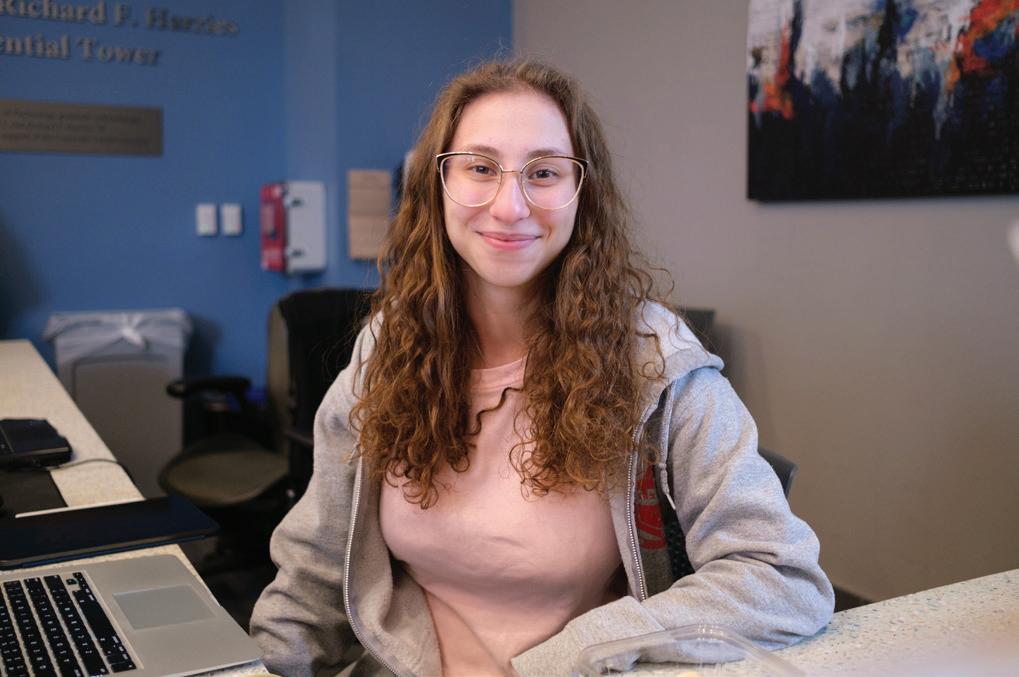
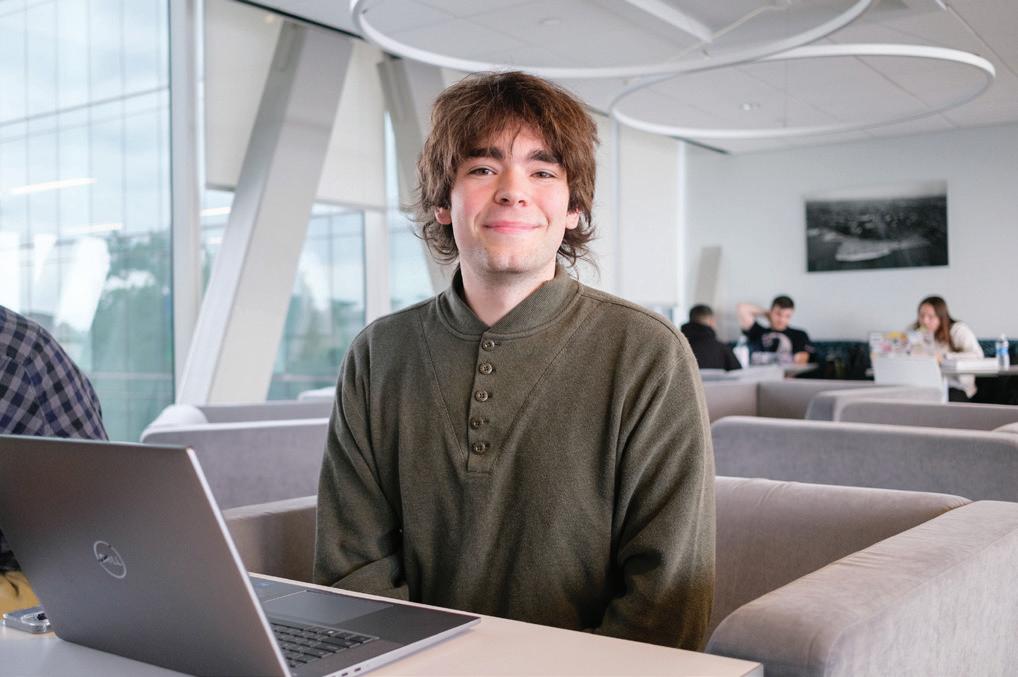

By Rafael Lee Li and Mia Petrolino
“If
